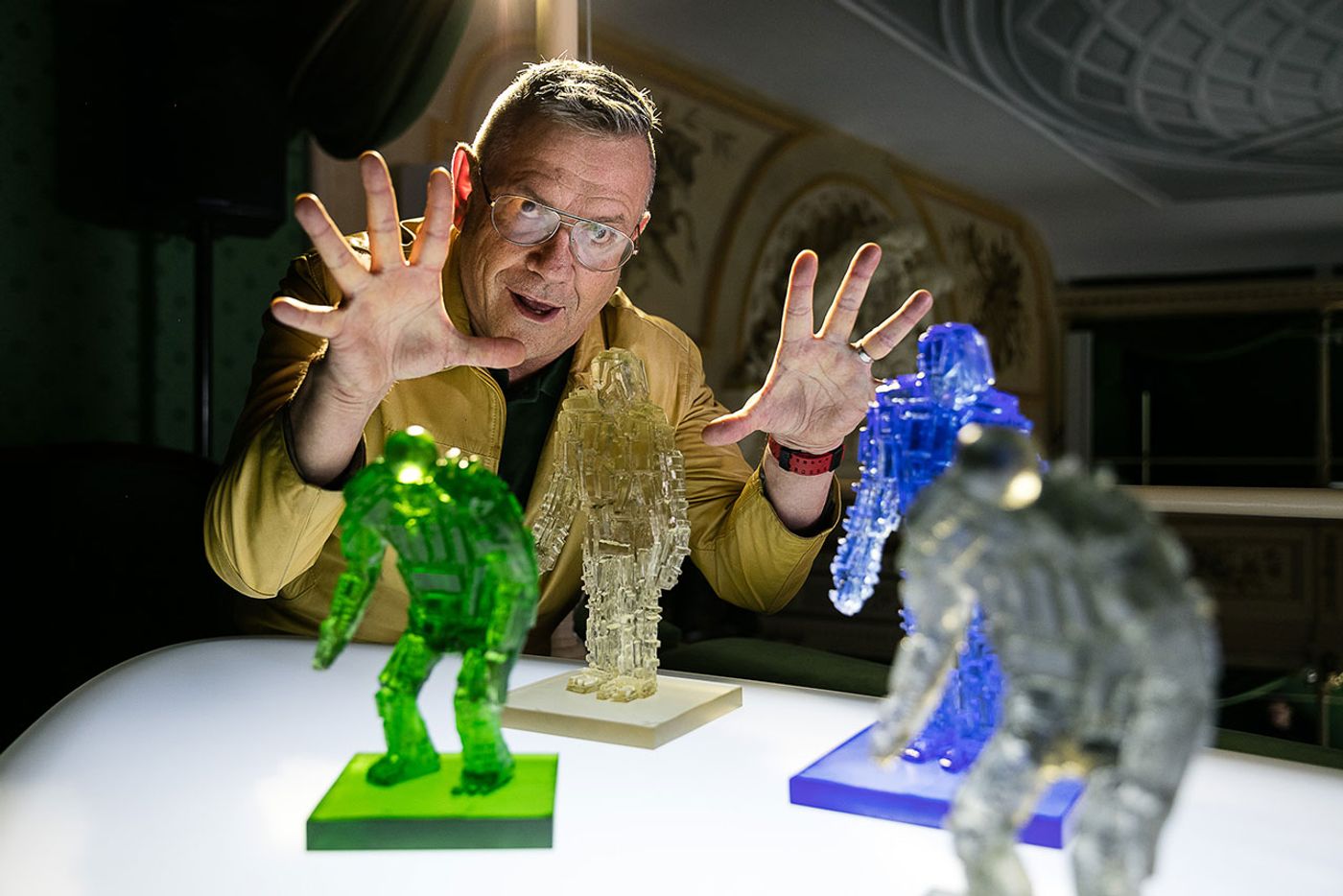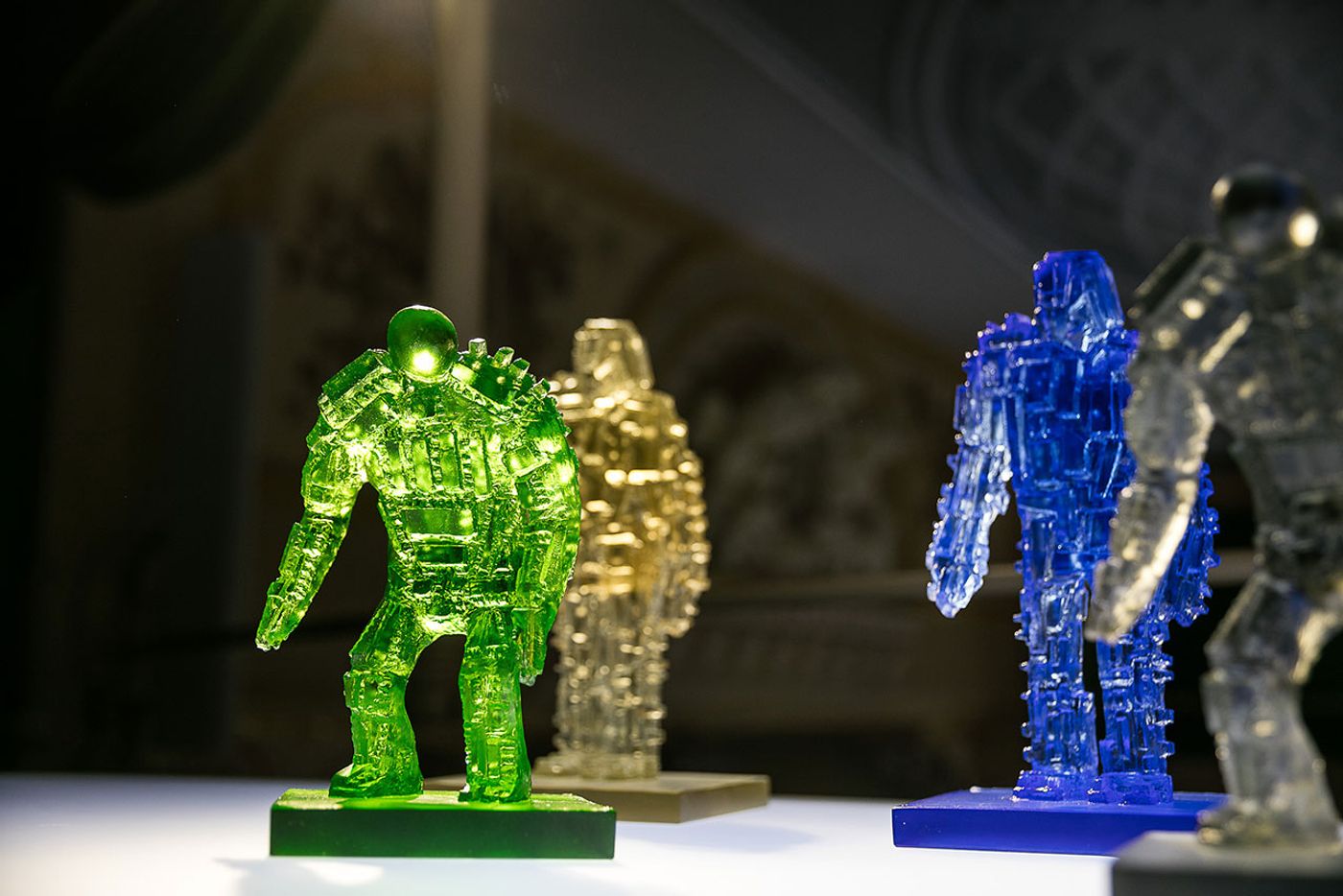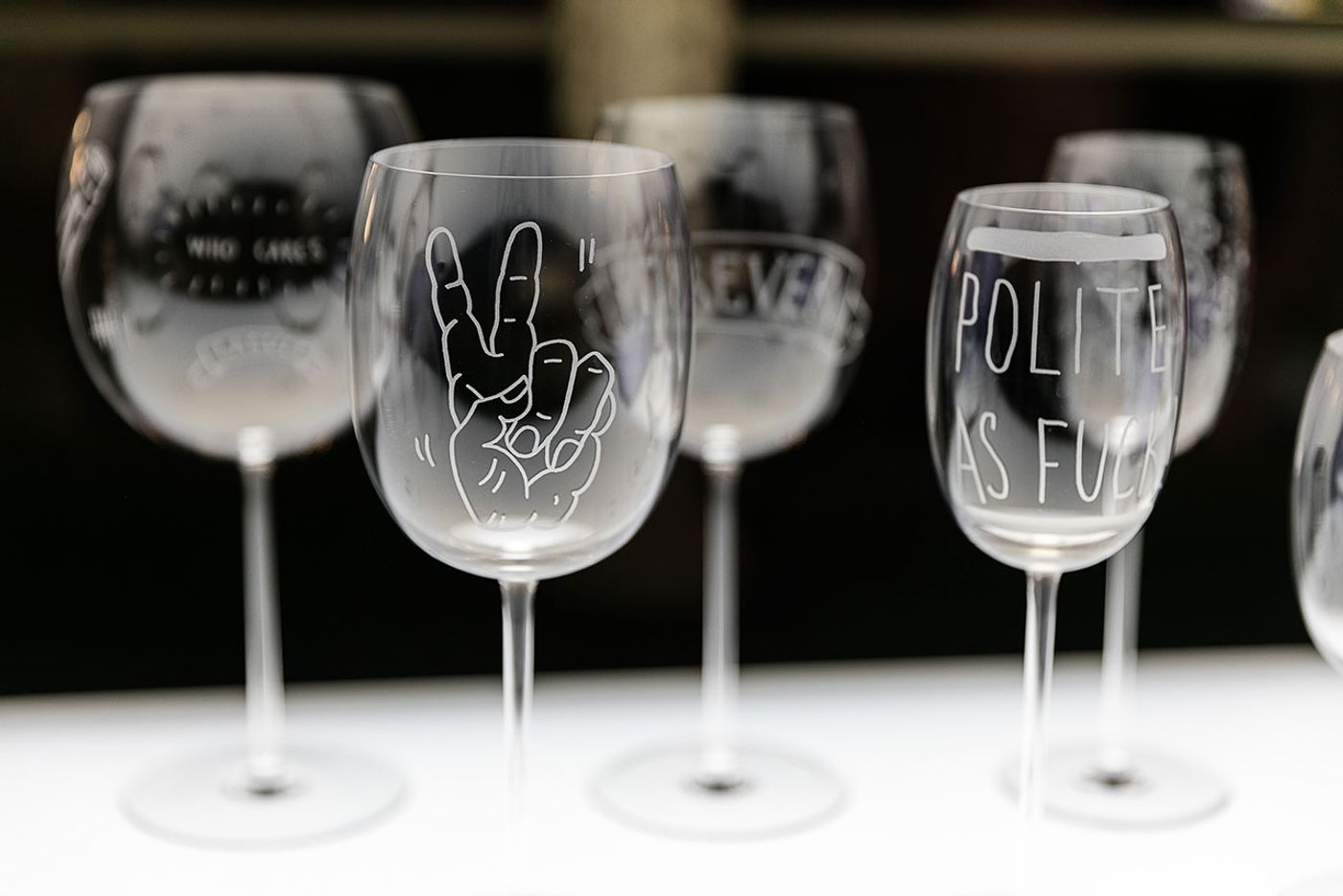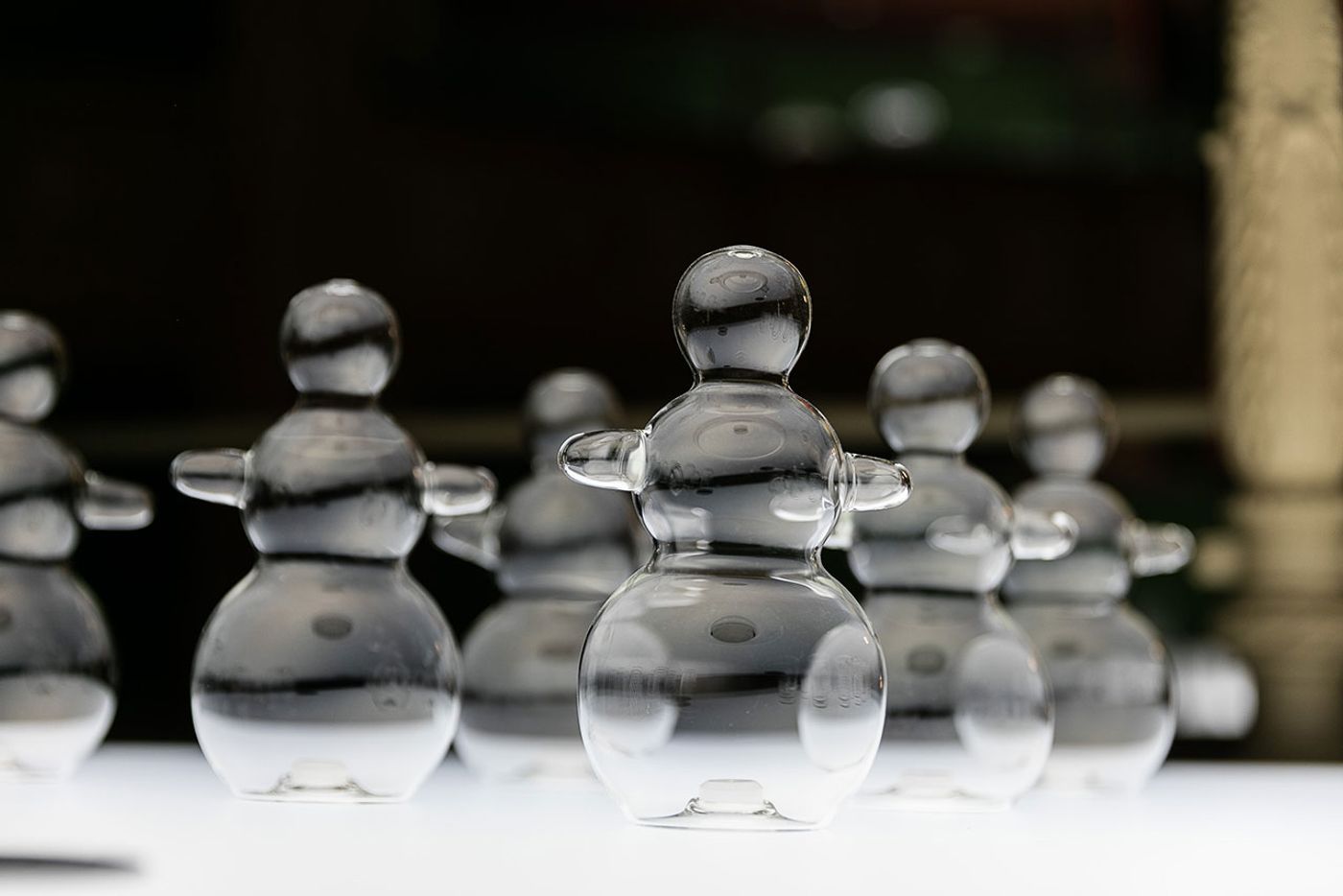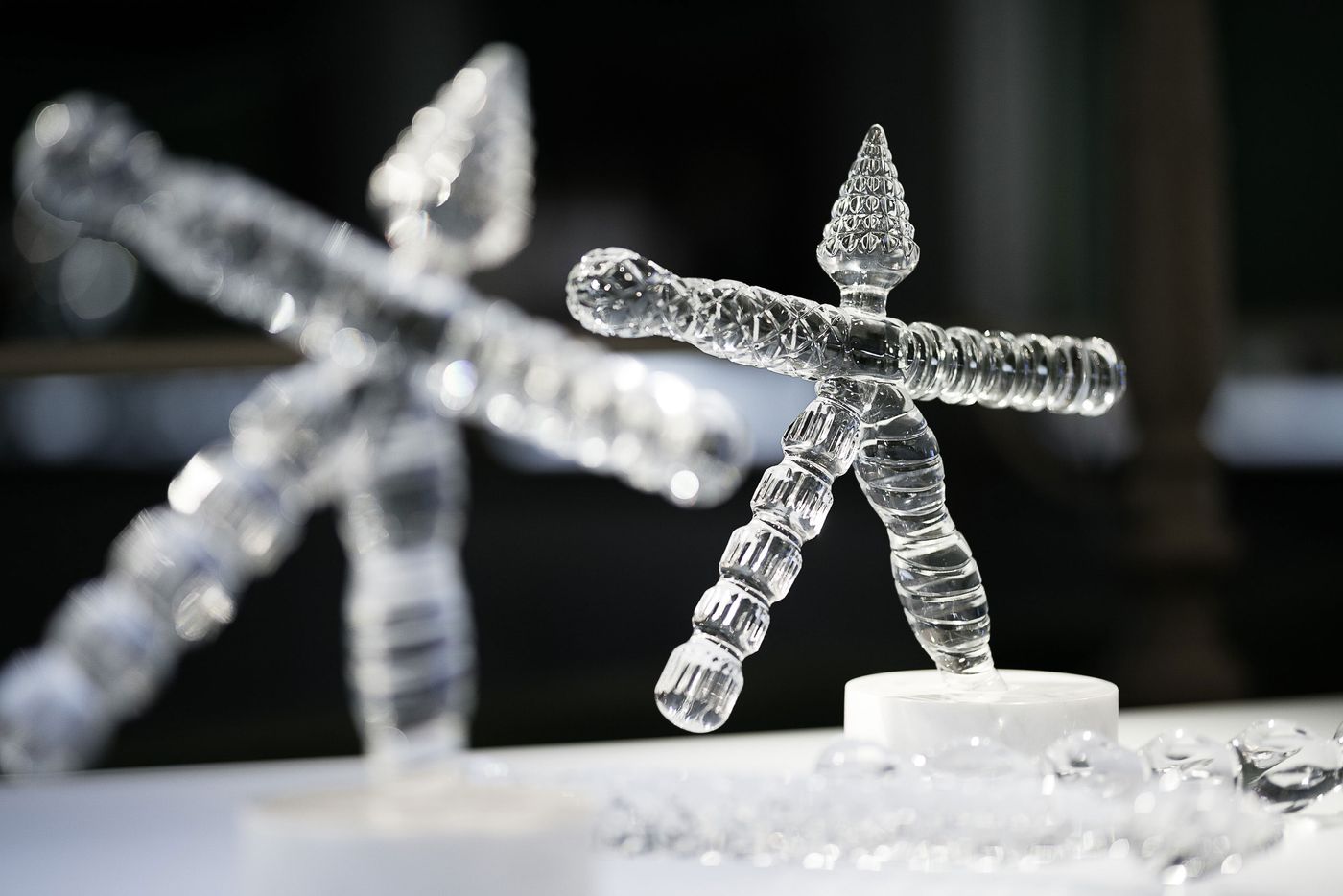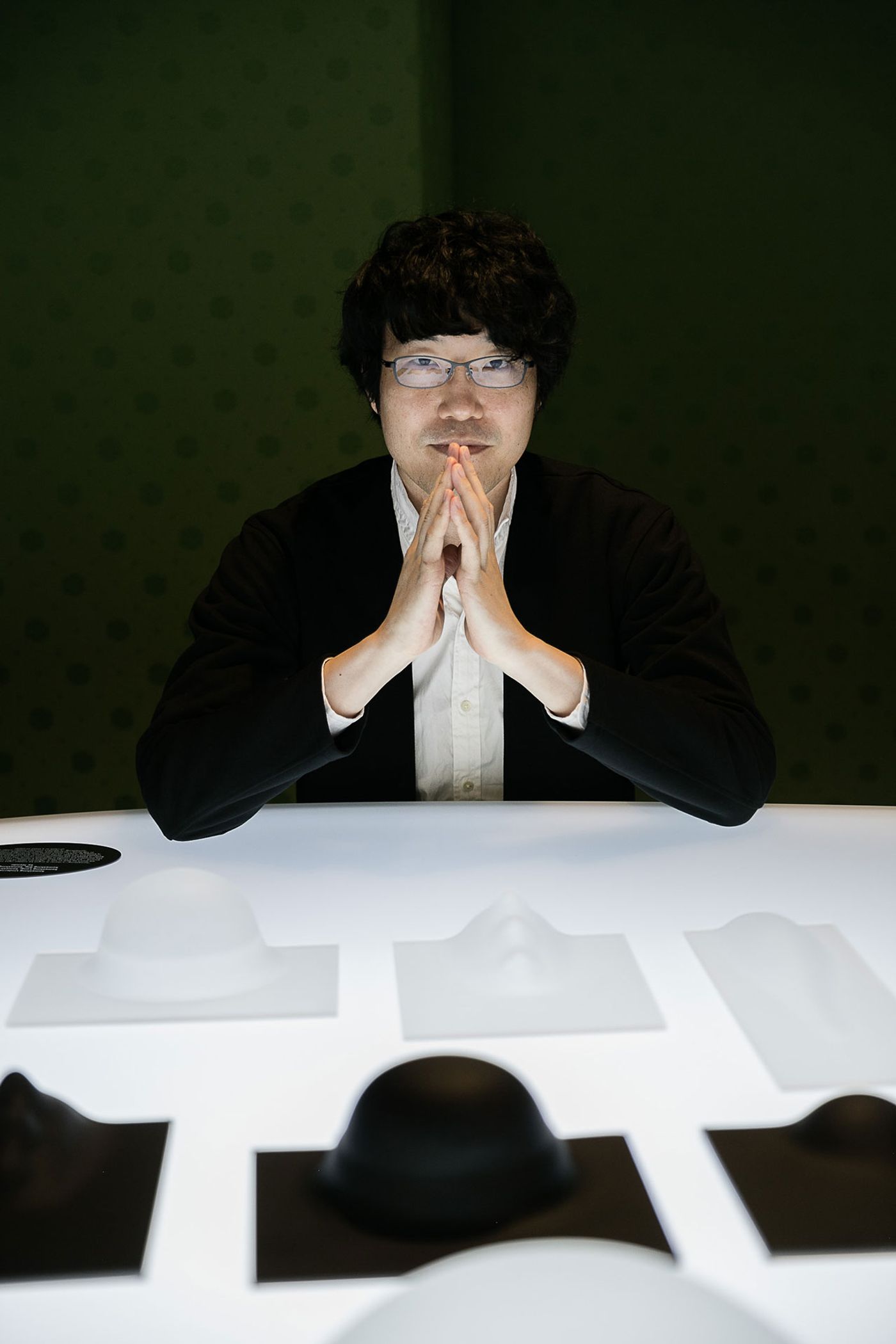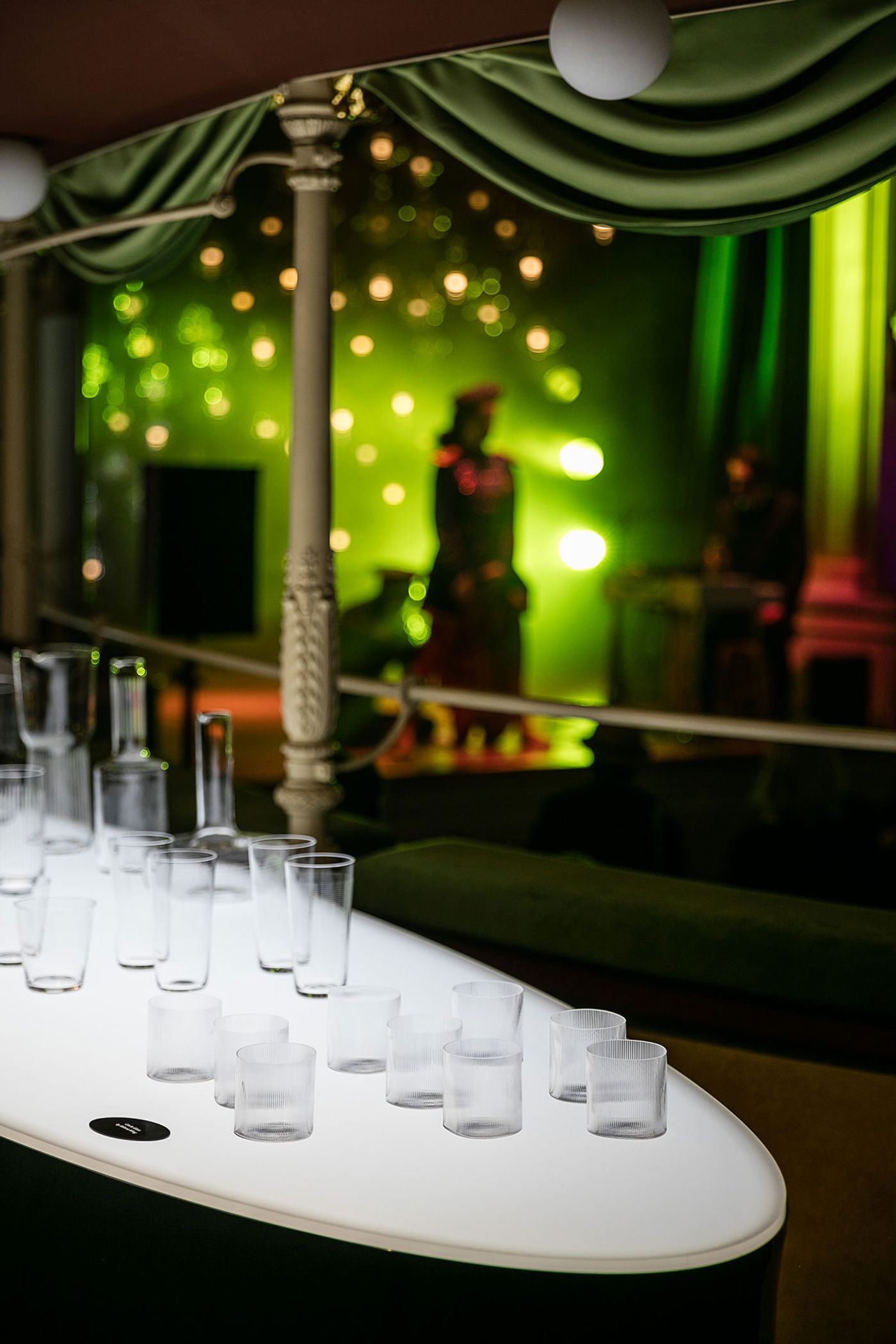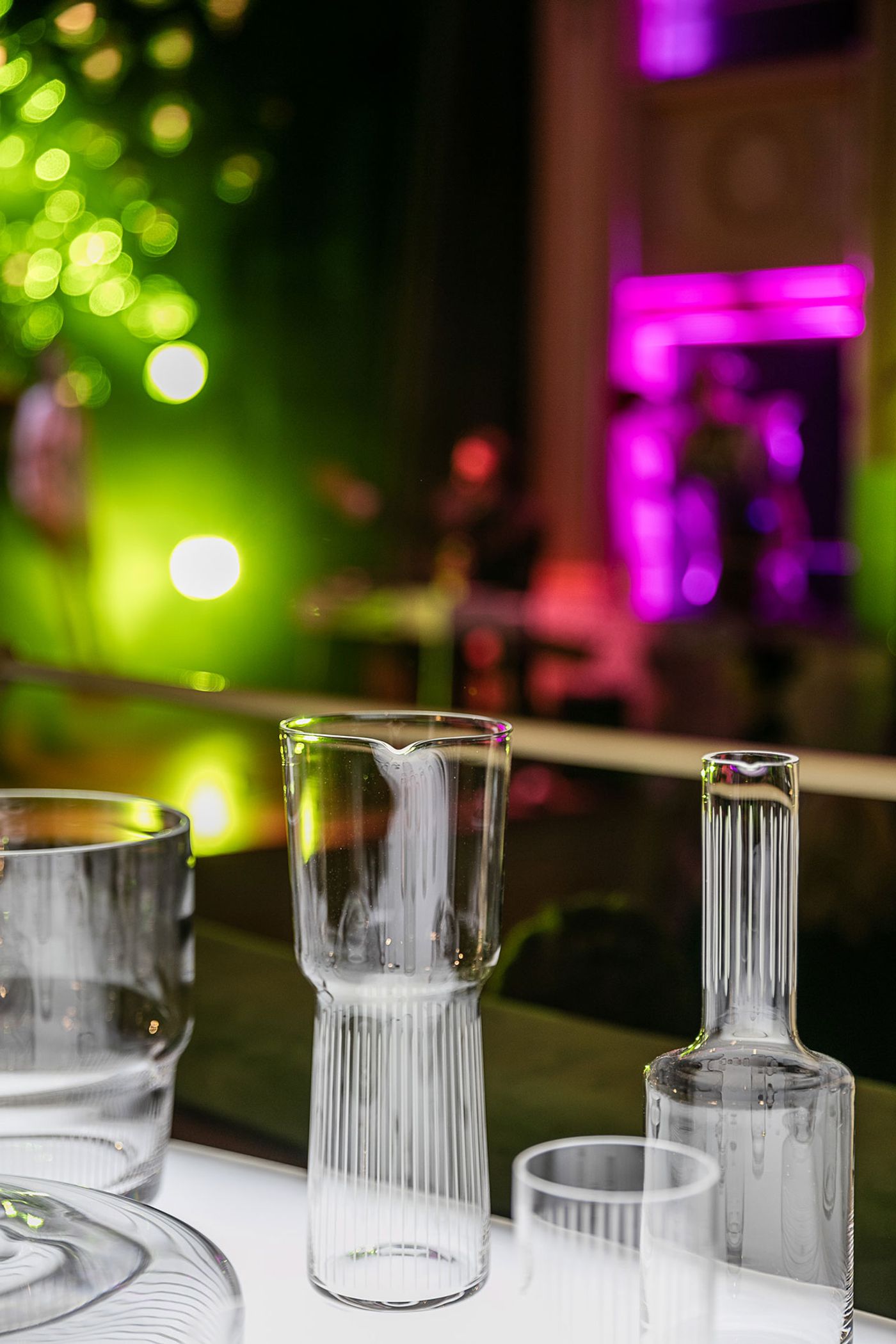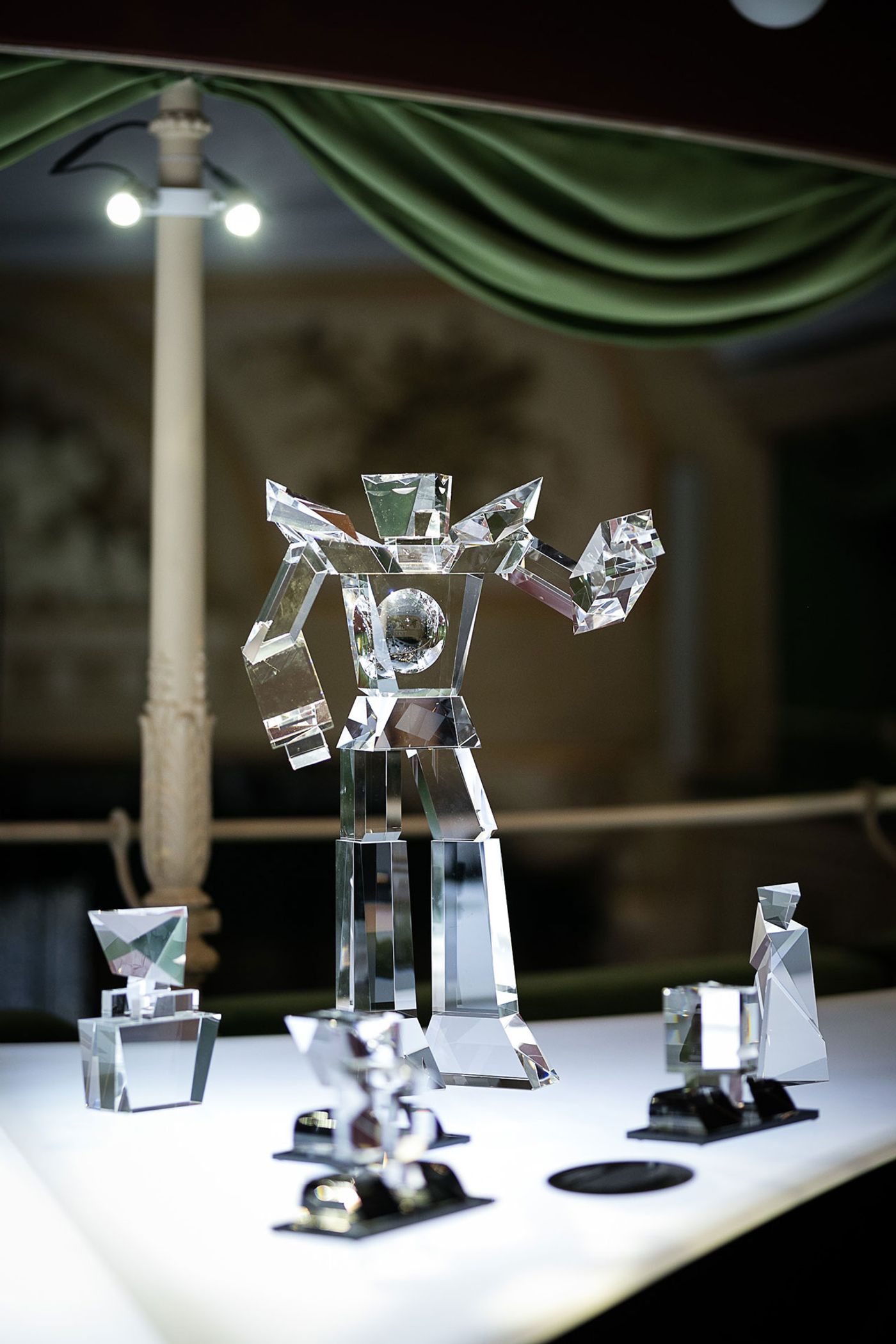
Monster Cabaret: Lasvit's Phantasmagorical Show at Milan Design Week
Words by Eric David
Location
Milan, Italy
Monster Cabaret: Lasvit's Phantasmagorical Show at Milan Design Week
Words by Eric David
Milan, Italy
Milan, Italy
Location
One of the most exhilarating exhibitions in Milan Design Week 2018 was undoubtedly Monster Cabaret, a fantastical show by Czech glassmaking and design company Lasvit who filled the 19th century Teatro Gerolamo with a kaleidoscopic posse of beasts, antiheroes, villains and outcasts, all made out of glass. Designed by an eclectic group of renowned designers, Lasvit’s motley band of phantasmagorical creatures populating the theatre’s balconies and boxes functioned less as exhibits and more as a kind of spectral audience whom visitors joined to watch a cabaret show performed on the hour by a company of burlesque dancers. This unique set-up, which also included a selection of the company's glassware and light fittings, made for a truly satisfying experience that justly outshone more than 1,500 exhibitions to be awarded the prestigious Milano Design Award.
Built in 1868 during an architectural boom sparked by the Italian Unification, the Teatro Gerolamo is a gem-like venue of Renaissance Revival that re-opened its doors after six years of extensive renovations in 2017. The theatre’s rejuvenated historic sensibility proved the ideal venue to showcase the Czech company’s artistry which draws from Bohemia’s centuries-old glassmaking traditions to produce contemporary pieces with the help of modern technologies and cutting-edge design. Bringing together international designers with Bohemian artisans, Lasvit’s Monster collection aptly made its premiere in a cabaret-like environment, a place where writers, artists, poets, and musicians have traditionally met.

Lasvit Monster Cabaret view at Teatro Gerolamo. On the background Neverending Glory chandelier collection. Photo courtesy Lasvit.
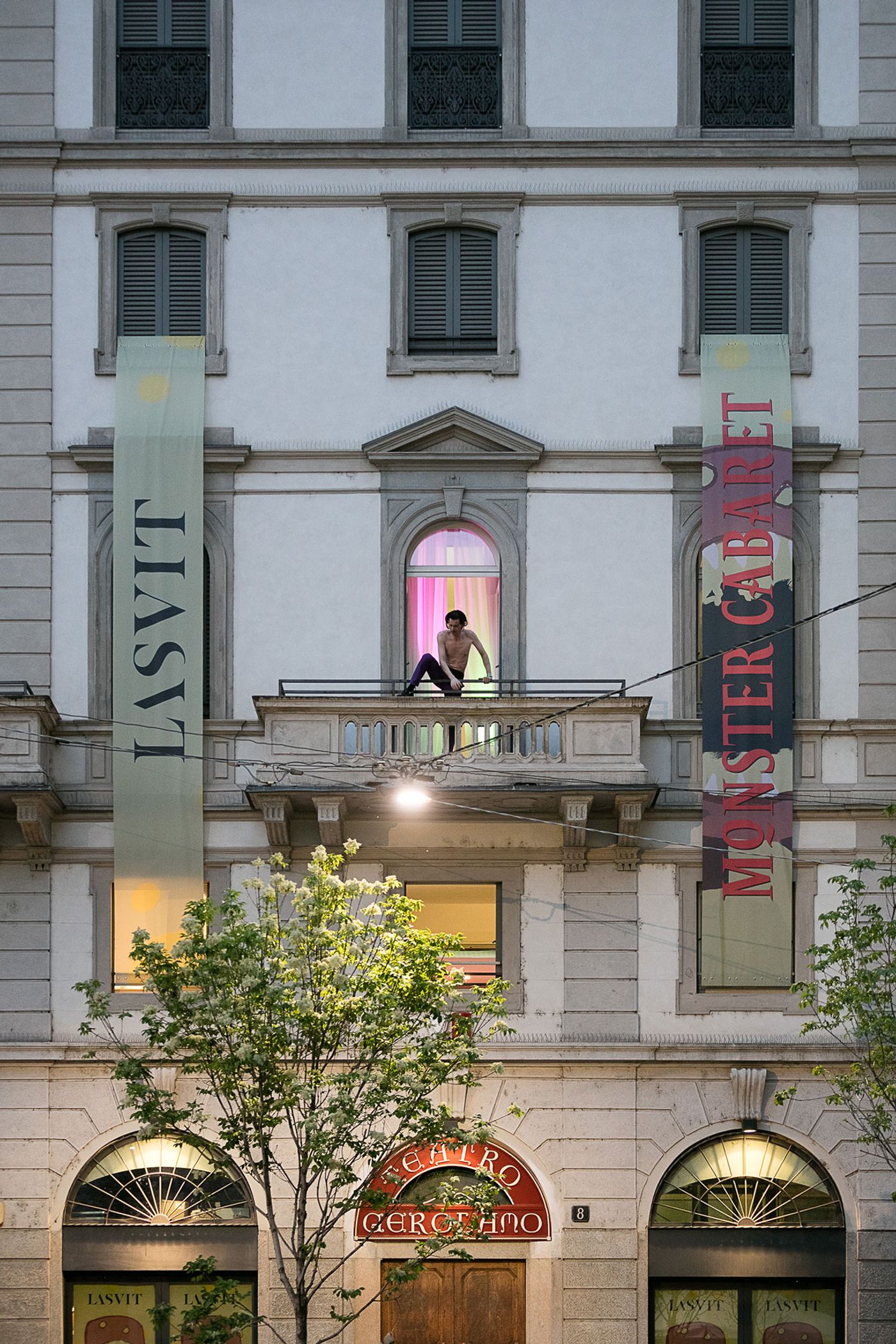
Lasvit Monster Cabaret exterior view at Teatro Gerolamo. Photo courtesy Lasvit.
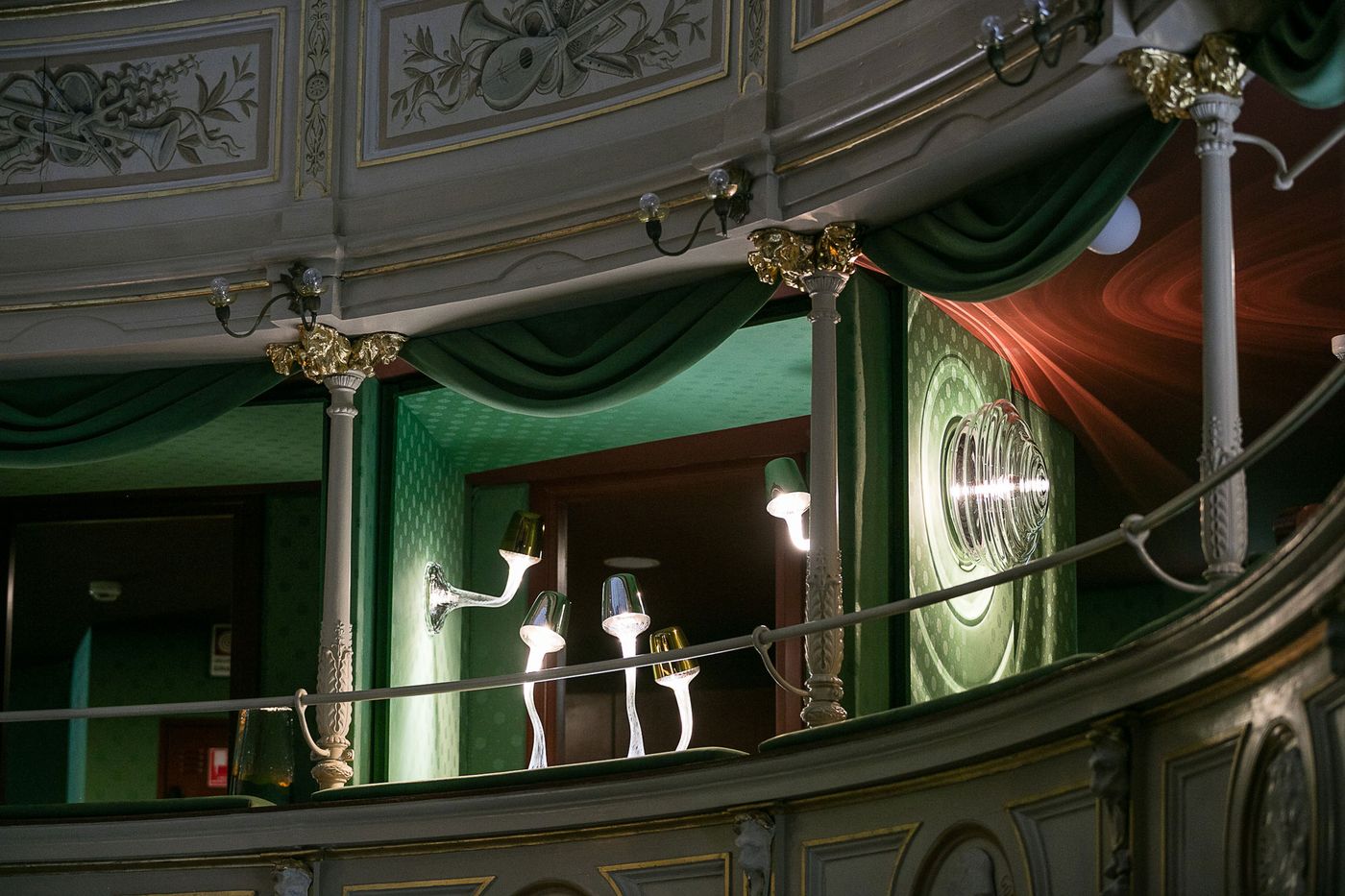
Lasvit Monster Cabaret view at Teatro Gerolamo. Photo courtesy Lasvit.
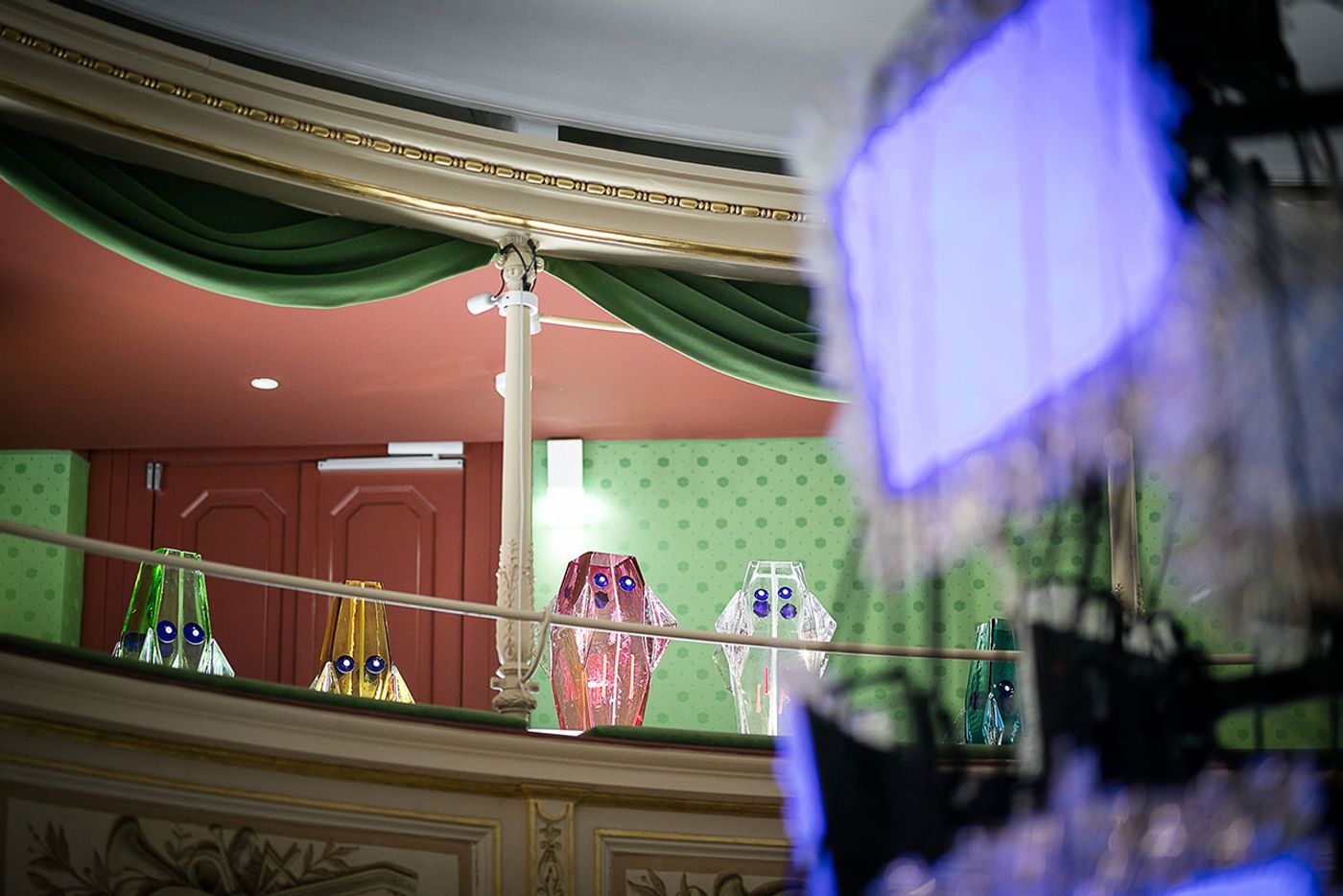
Lasvit Monster Cabaret, Rombo by Alessandro Mendini. Photo courtesy Lasvit.
Monster Cabaret’s designers were given carte blanche to dig deep into their childhood fears, adult nightmares and existential concerns in order to bring to life their own private monsters. Showcased in the theatre’s second balcony, this collection proves that monsters come in all shapes and sizes. It also demonstrated, along with the company’s exquisite glassware and light fittings on display on the first balcony, the extraordinary craftsmanship of Lasvit’s glassmakers who had to work with some very challenging designs, the most unique of which are only available in limited editions.
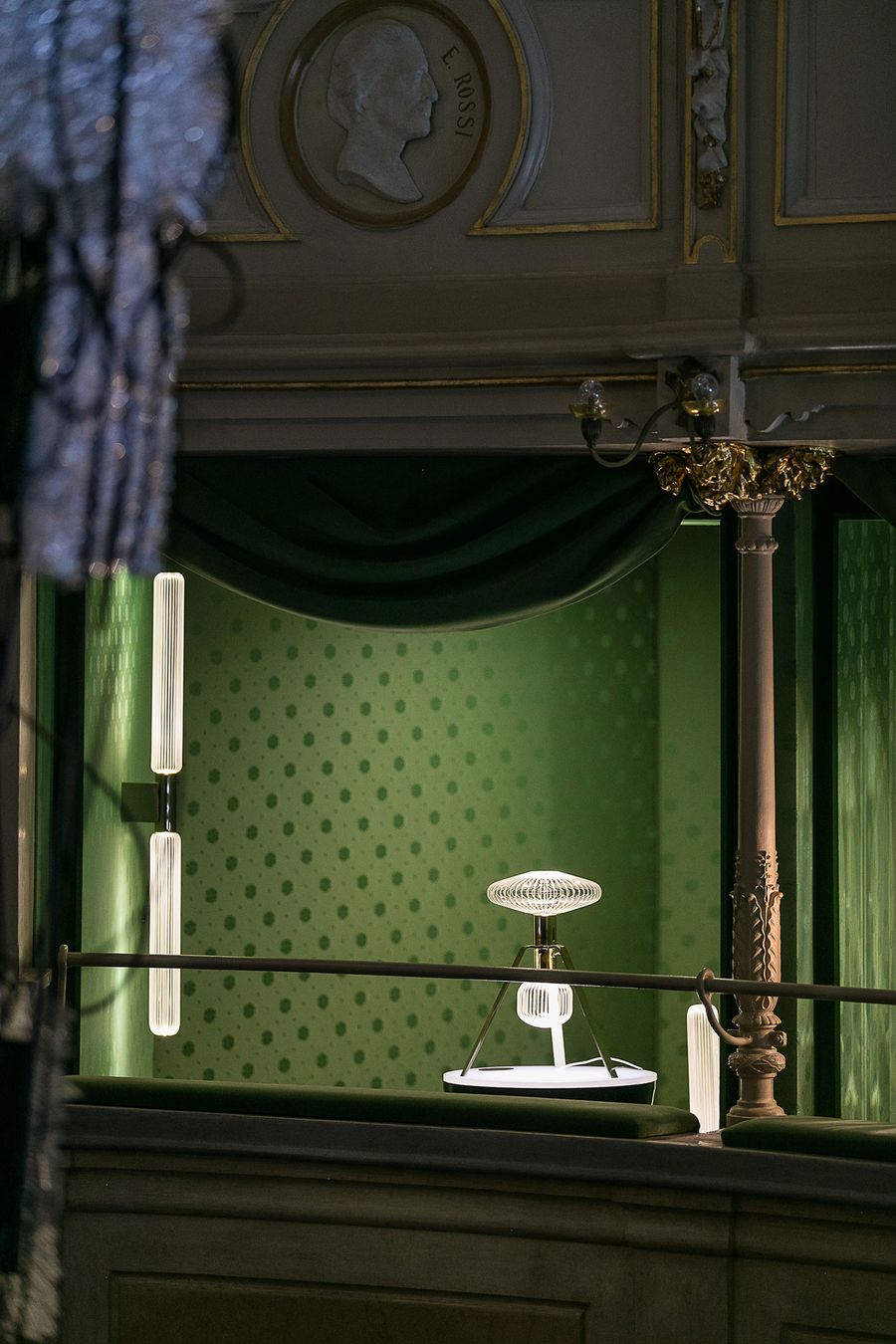
Lasvit Monster Cabaret view at Teatro Gerolamo. Photo courtesy Lasvit.

Lasvit Monster Cabaret, The Martian by René Roubíček. Photo courtesy Lasvit.
The designers have found inspiration for their malevolent creations from all sorts of places—after all, our deepest fears are strictly idiosyncratic in their nature. Czech glass-working icon René Roubíček, for example, channels vintage science fiction iconography through his Martian collection of uranium glass, whereas Dutch designer Maarten Baas has turned to recently discovered fossils to design his torso-less, colourful little monsters whose sharp teeth are meant “to kill and crunch their prey, but without eating it”. Polish architect Daniel Libeskind on the other hand was inspired by Rosencrantz and Guildenstern, the dishonest characters from Shakespeare’s Hamlet, whom he transfigured into two hand-sculpted clay statues that were subsequently transformed into beautiful glass objects.
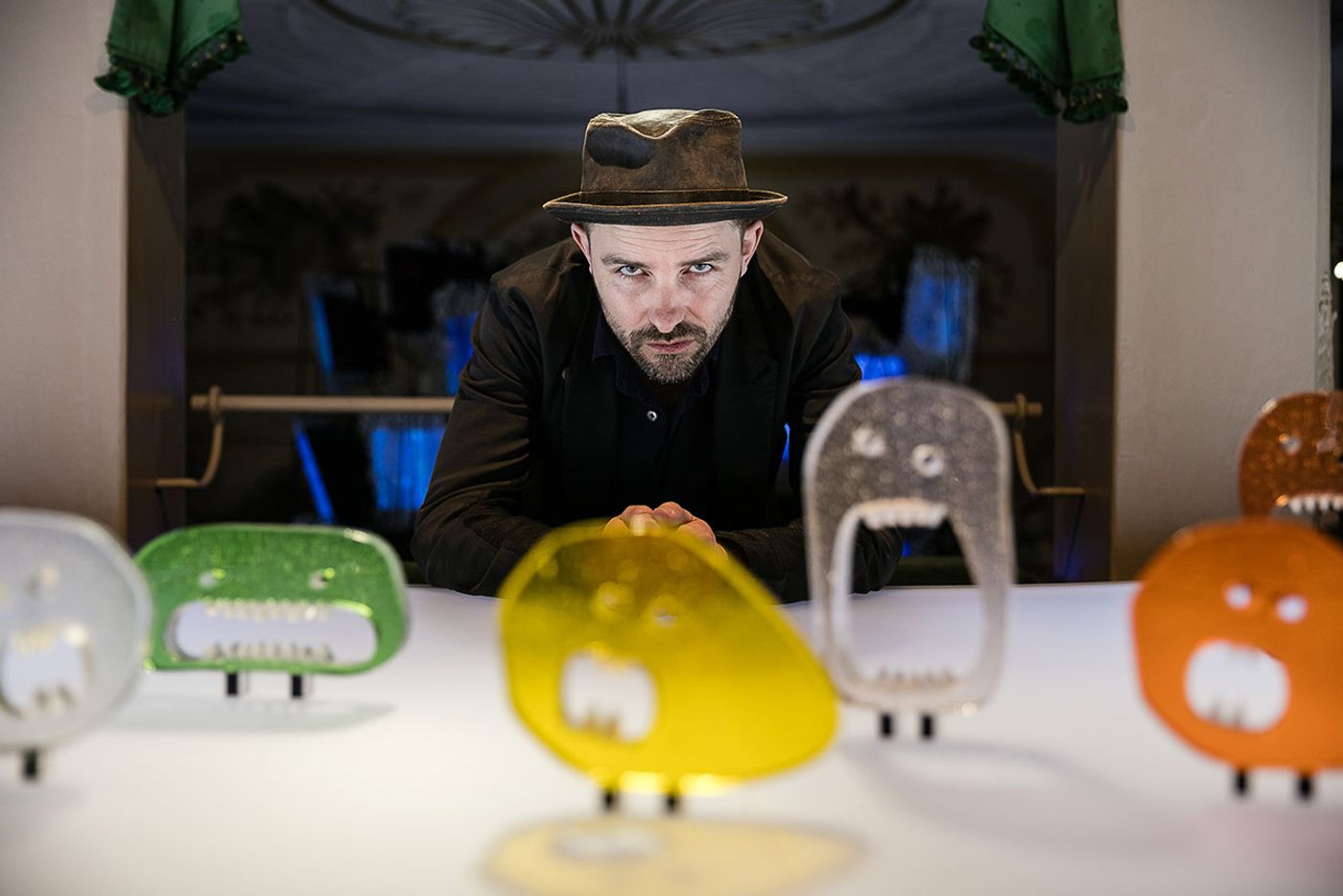
Lasvit Monster Cabaret, BHSD by Maarten Baas. Photo courtesy Lasvit.

Lasvit Monster Cabaret, Outer Space Monsters by Campana Brothers. Photo courtesy Lasvit.
The ghostly harmlessness of Libeskind’s creatures is shared by the three claw-less and fang-less Tsukumogami monsters by George Yabu and Glenn Pushelberg of Canadian design studio Yabu Pushelberg who turned to Japanese folklore for inspiration, as well as Italian designer Alessandro Mendini’s two Rombo vases whose oblong faces stare at you cryptically. Meanwhile, the Lenin statuettes by Lasvit’s Art Director Maxim Velčovský hark back to the time he was growing up in the 70s and 80s when the Russian revolutionary’s face was ubiquitous in his native Prague. Playfully portraying the spectre of extreme ideologies, Velčovský's Lenin suffers from a malignant form of leftism visible in his abnormally elongated left limbs.
For Austrian artist Raja Schwahn-Reichmann, her personal monster takes the form of a one-eyed, black-furred “Dancing Dog”, a Tasmanian Devil-like creature whose evil eye, exquisitely made our of coloured glass, “can turn a peaceful feast into a cruel fight or a destructive orgy”. Maurizio Galante & Tal Lancman’s creature also looks at you nefariously albeit with 101 pink egg-shaped eyes instead of one. Covered in obsidian scales in a green uranium shade, their monster reminds you of everything that you are afraid to see in the mirror.
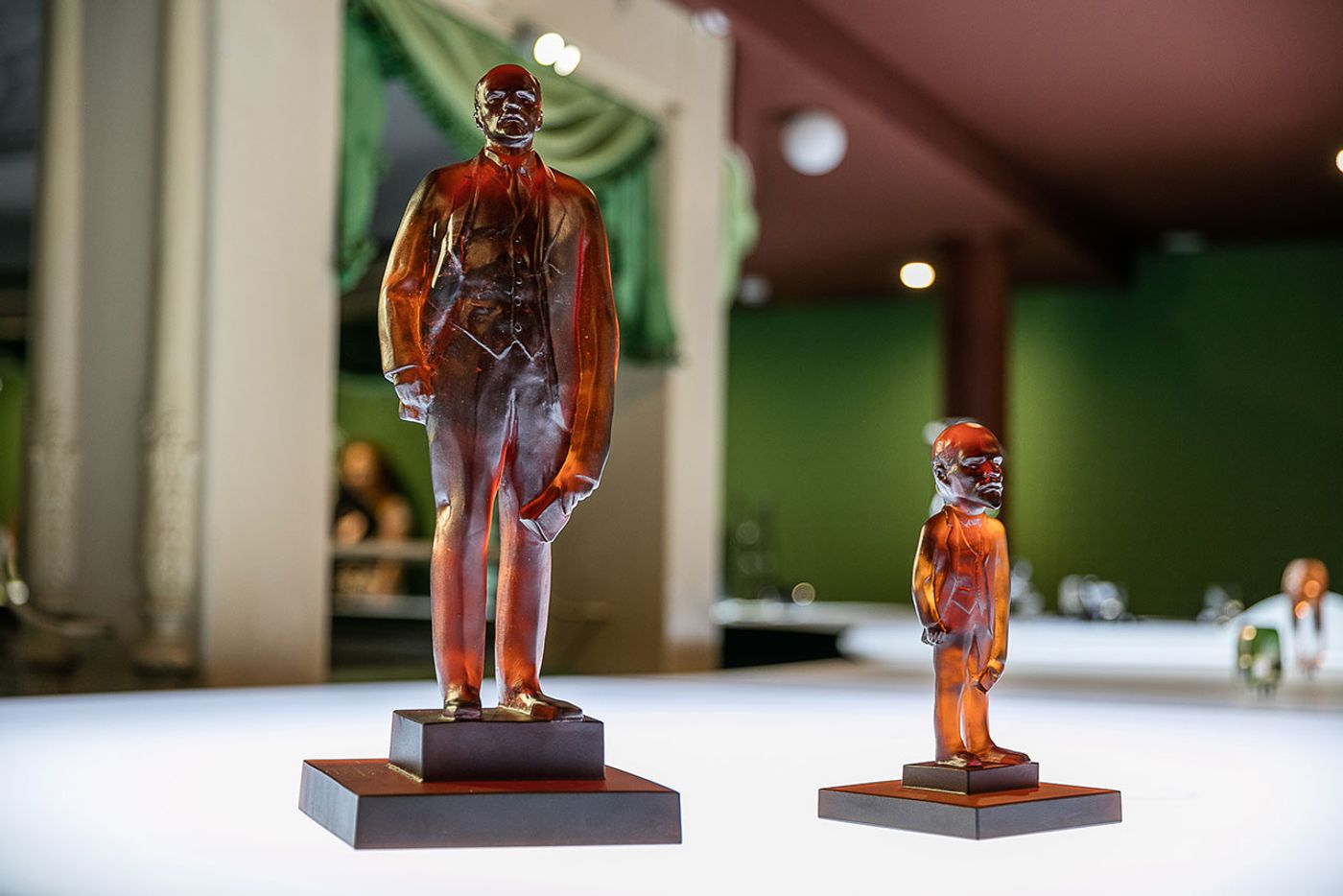
Lasvit Monster Cabaret, Leftism by Maxim Velčovský. Photo courtesy Lasvit.
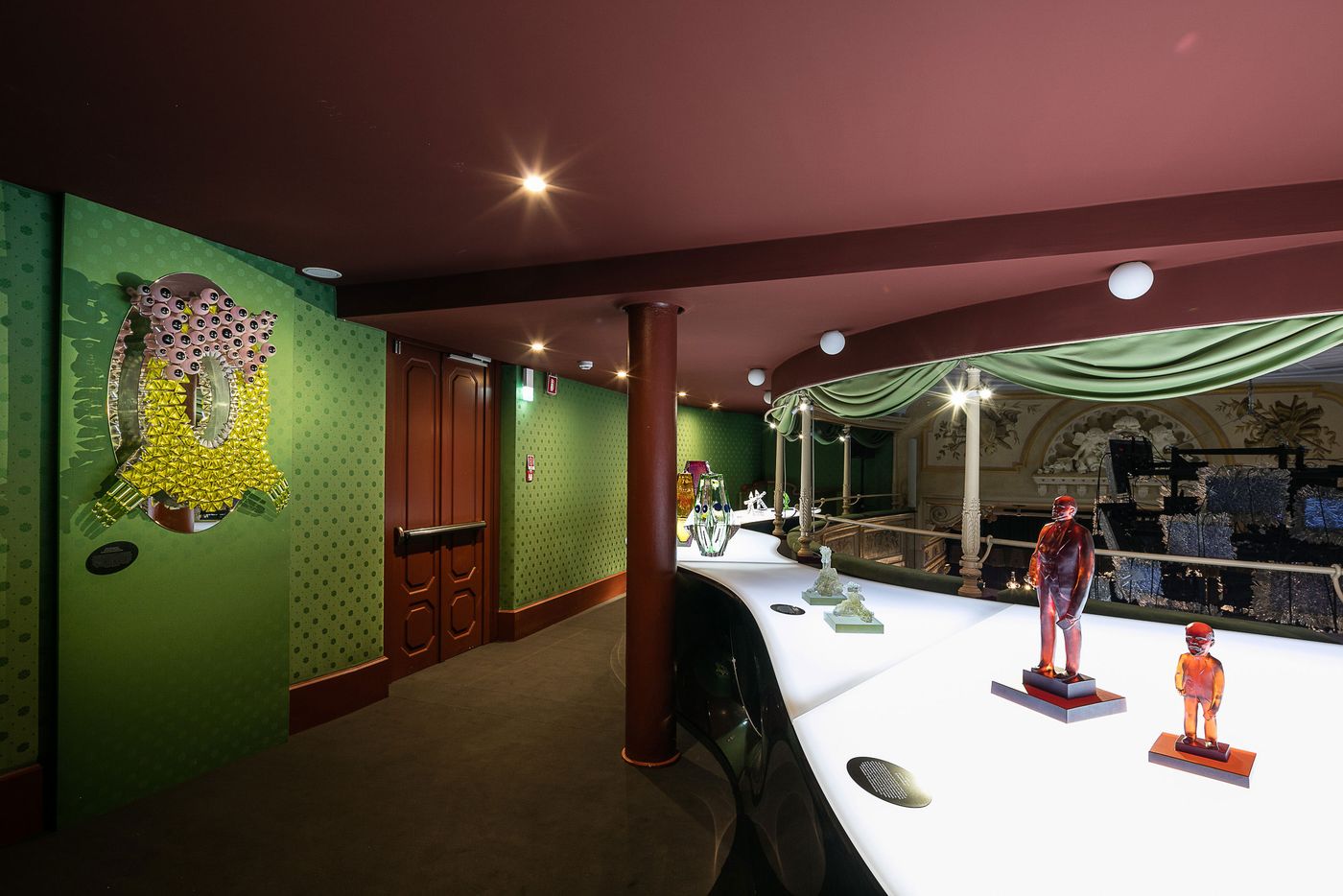
Lasvit Monster Cabaret, installation view at Teatro Gerolamo. Photo courtesy Lasvit.
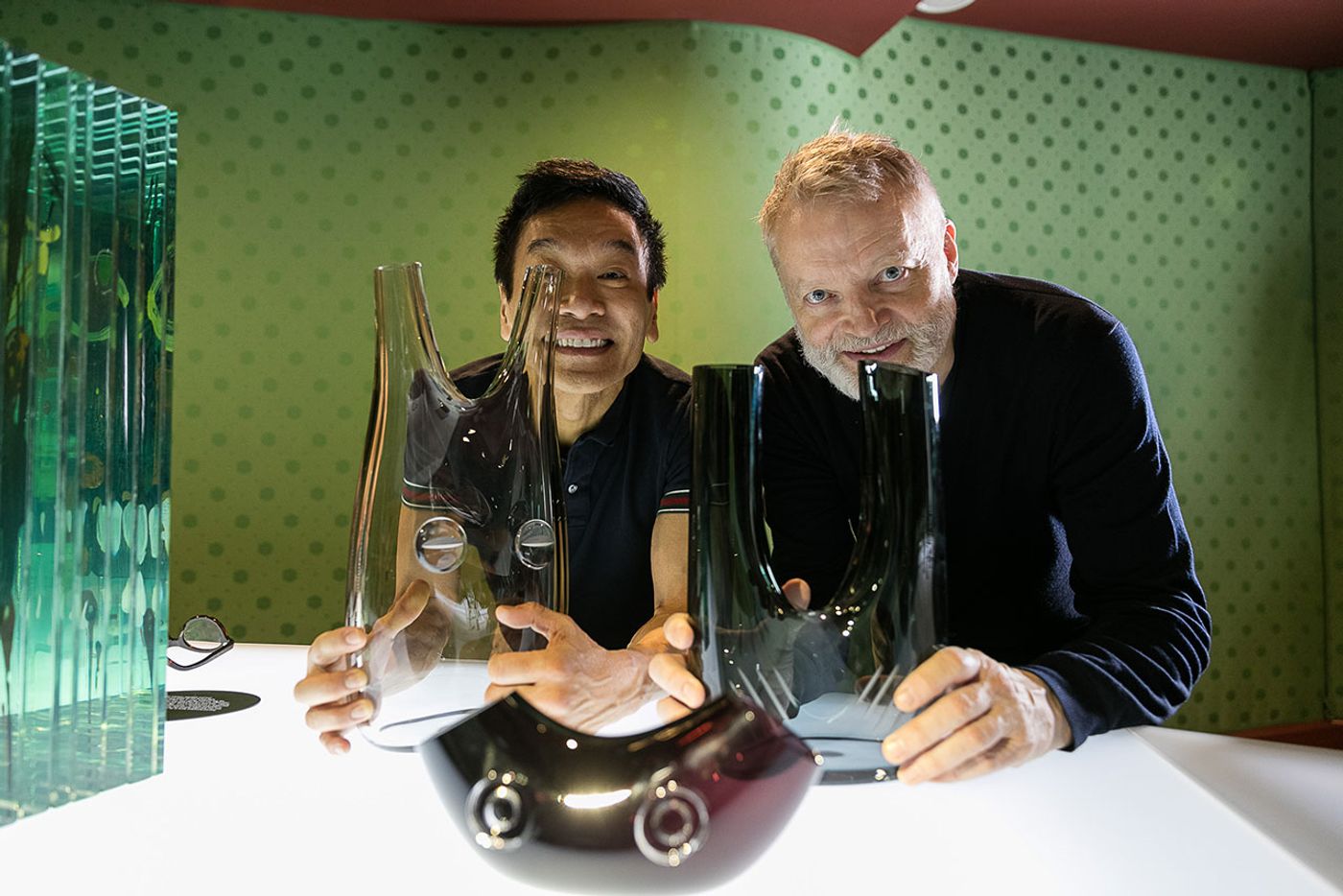
Lasvit Monster Cabaret, Tsukumogami by Yabu Pushelberg. Photo courtesy Lasvit.
The most dominant installation however in the three-storey auditorium was “Independant”, a monstrous installation made up of more than a hundred TV screens strapped onto a whirlwind of cables that menacingly stretch like an inverted pendant from the orchestra floor all the way to the ceiling —hence its titular pun that combines the words independent and pendant. Inspired by the advertising and news columns that appeared in several European cities in the second half of the 19th century, the totem-like artwork was conceived by Velčovský as a billboard of our time, spewing “beautiful fake news” that came across sometimes as nefarious, unintelligible whispers, and other times as jarring, loud warnings. The screens, covered in crystal-like glass needles that had been fused together, were purportedly broadcasting the “crystal truth” through an audiovisual jamboree of enticing sounds and colours that the glass monsters seemed to have been drawn to.
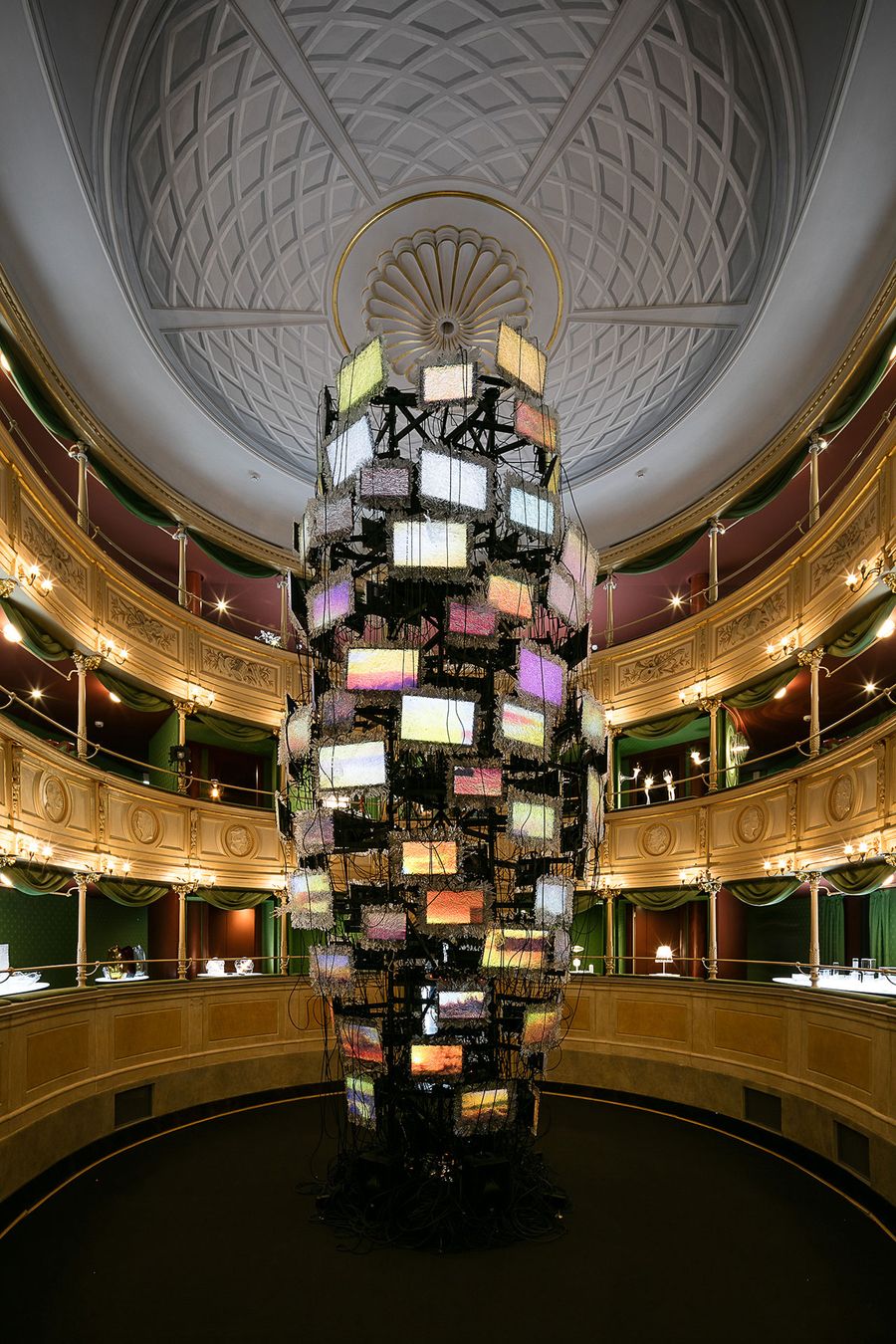
Lasvit Monster Cabaret, Independant by Maxim Velčovský. Photo courtesy Lasvit.
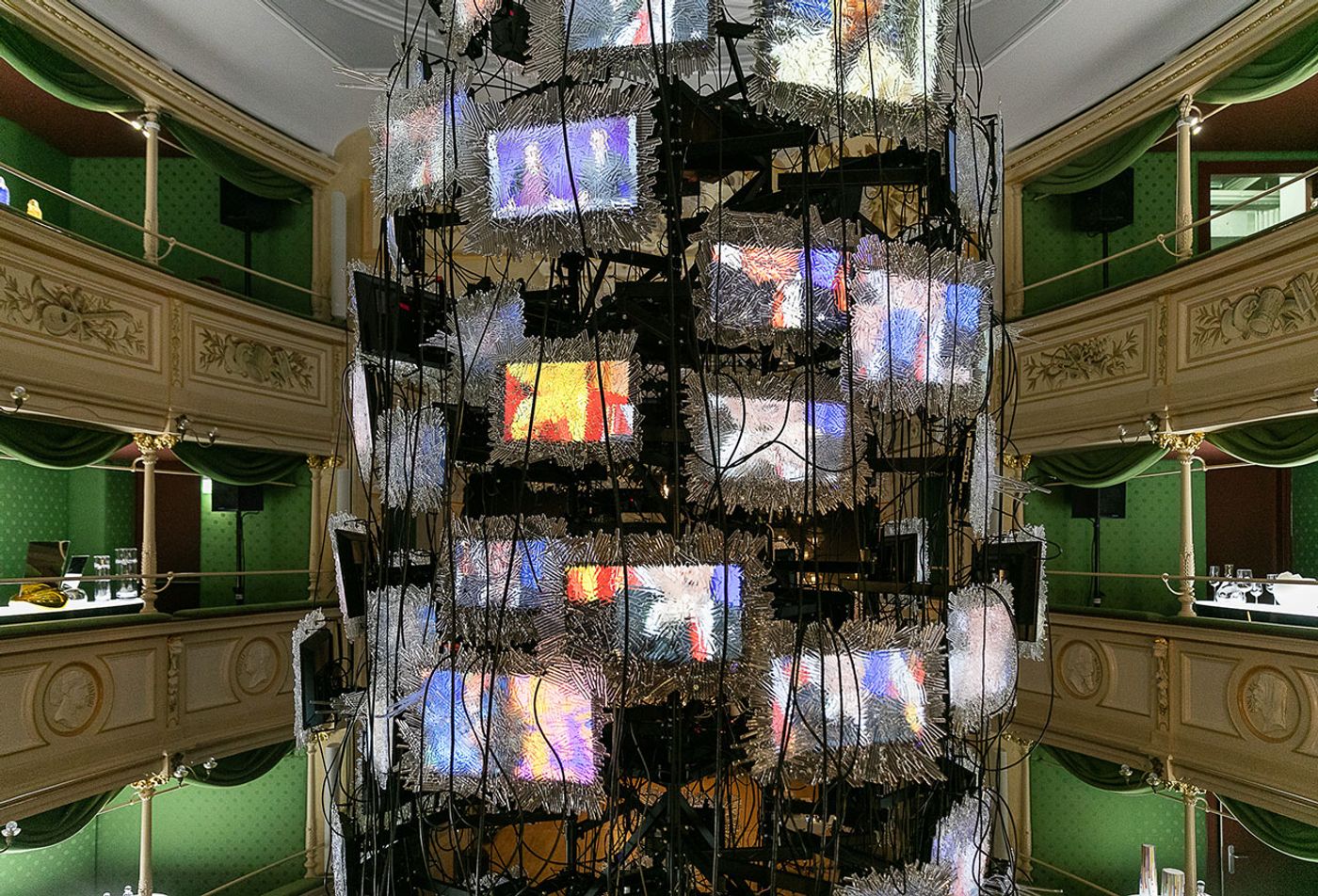
Lasvit Monster Cabaret, Independant by Maxim Velčovský. Photo courtesy Lasvit.
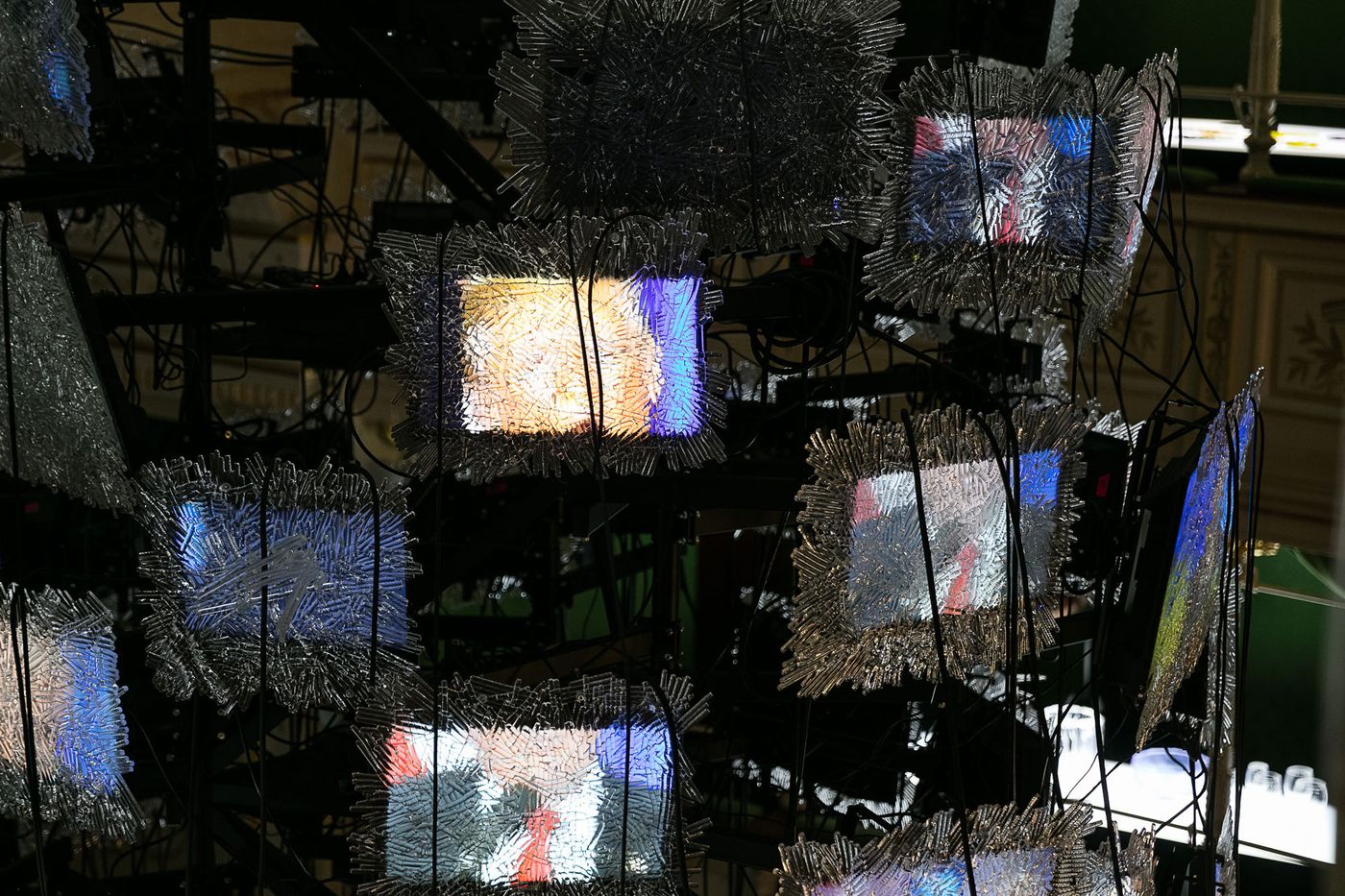
Lasvit Monster Cabaret, Independant by Maxim Velčovský. Photo courtesy Lasvit.
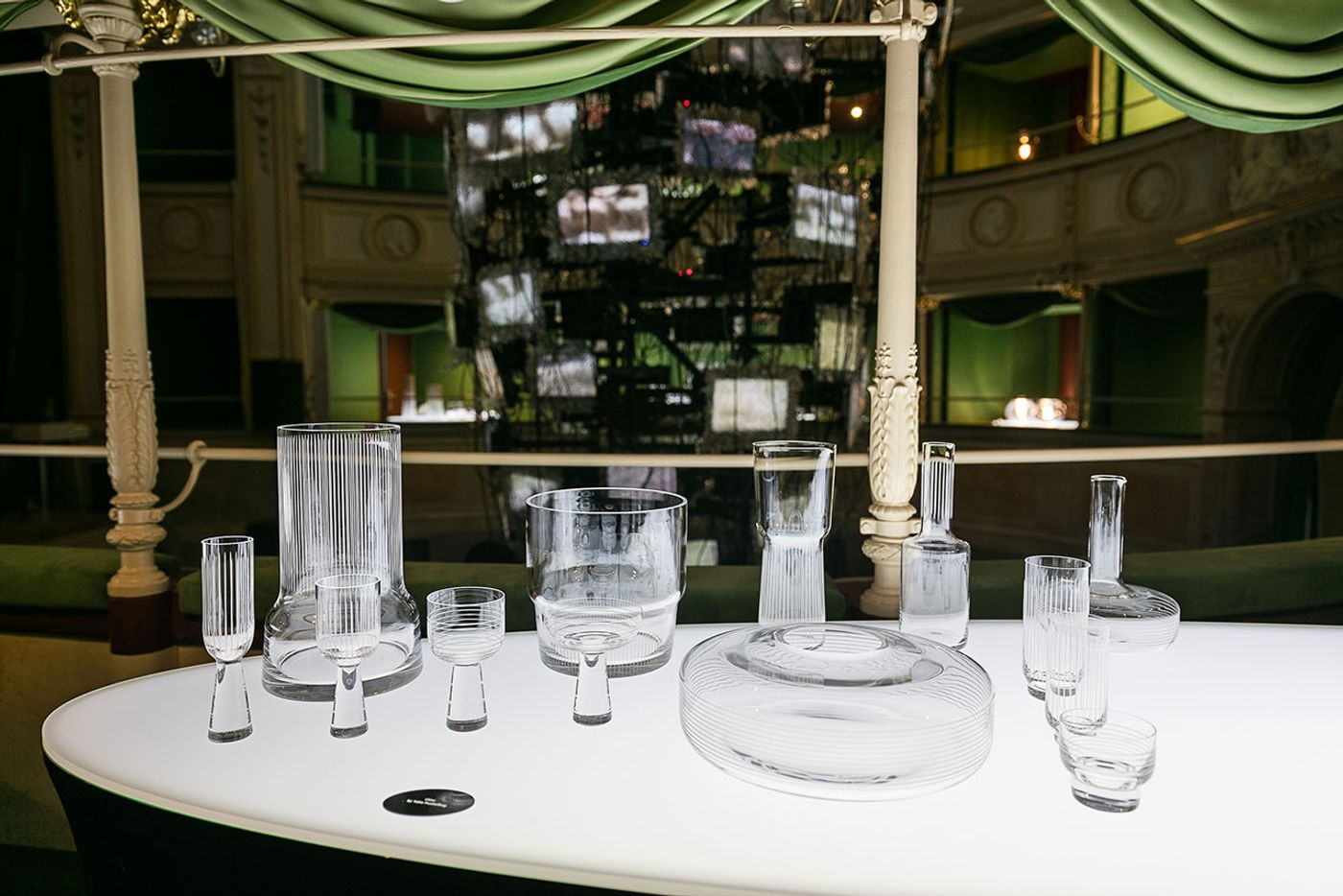
Lasvit Monster Cabaret view at Teatro Gerolamo. Photo courtesy Lasvit.
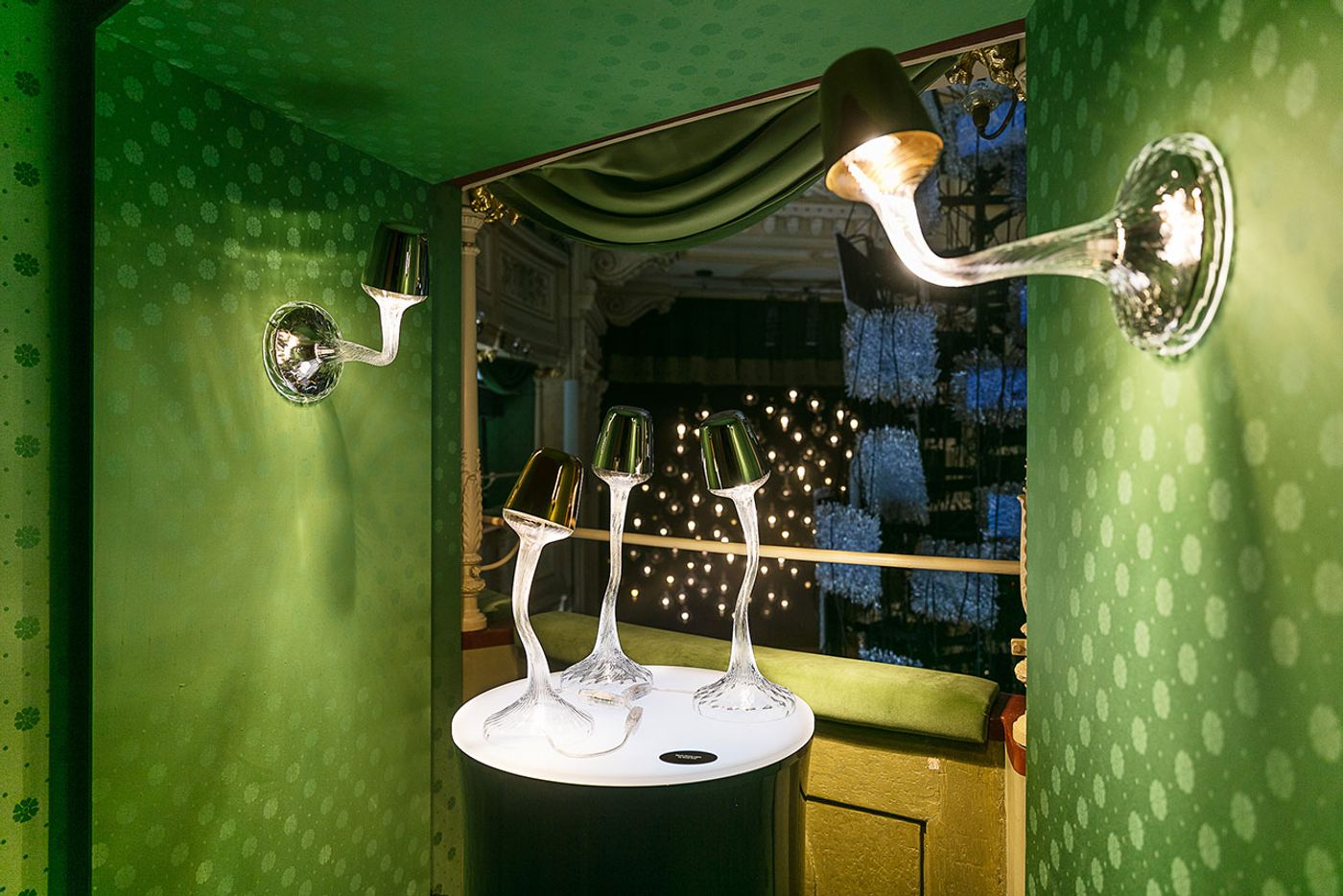
Lasvit Monster Cabaret view at Teatro Gerolamo. Photo courtesy Lasvit.
A very different but as colourful show took place on the theatrical stage where every hour a glamorously attired company of burlesque dancers performed another segment of their monster show. The acts were also accompanied by a dynamic light show courtesy of a cascading installation of 108 small Neverending Glory light pendants. Made out of clear hand-blown glass, the pendants are shaped in the likeness of some of the world’s most eminent concert halls and theatres; La Scala in Milan, Palais Garnier in Paris, the Metropolitan Opera in New York, the Bolshoi Theatre in Moscow, and the Czech Republic’s Estates Theatre in Prague. It is thus quite fitting that these particular chandeliers were chosen to adorn the stage of the Teatro Geroalmo, their ghostly presence summoning Monster Cabaret’s grotesque creatures out of the shadows and into the limelight.
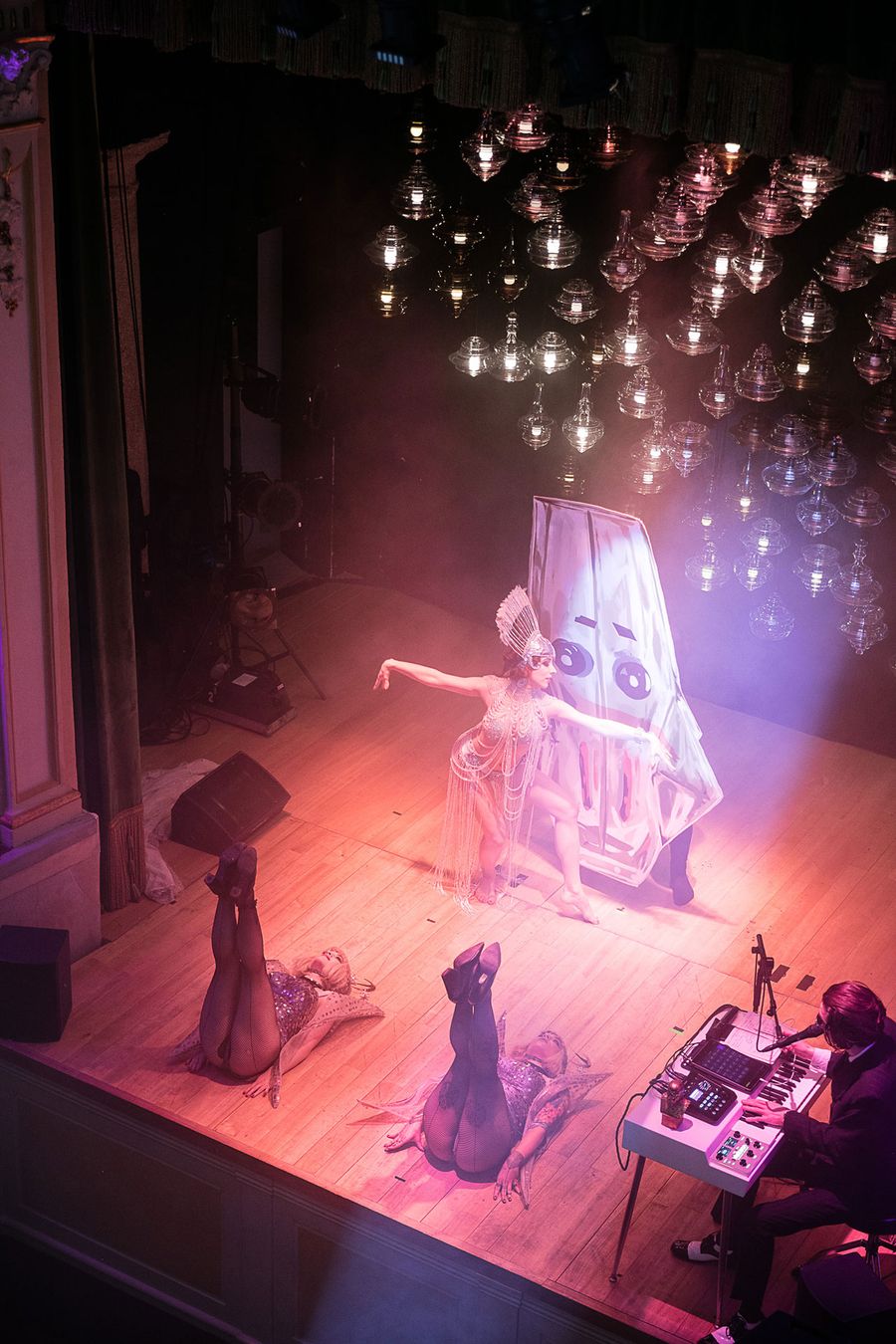
Lasvit Monster Cabaret view at Teatro Gerolamo. On the background Neverending Glory chandelier collection. Photo courtesy Lasvit.
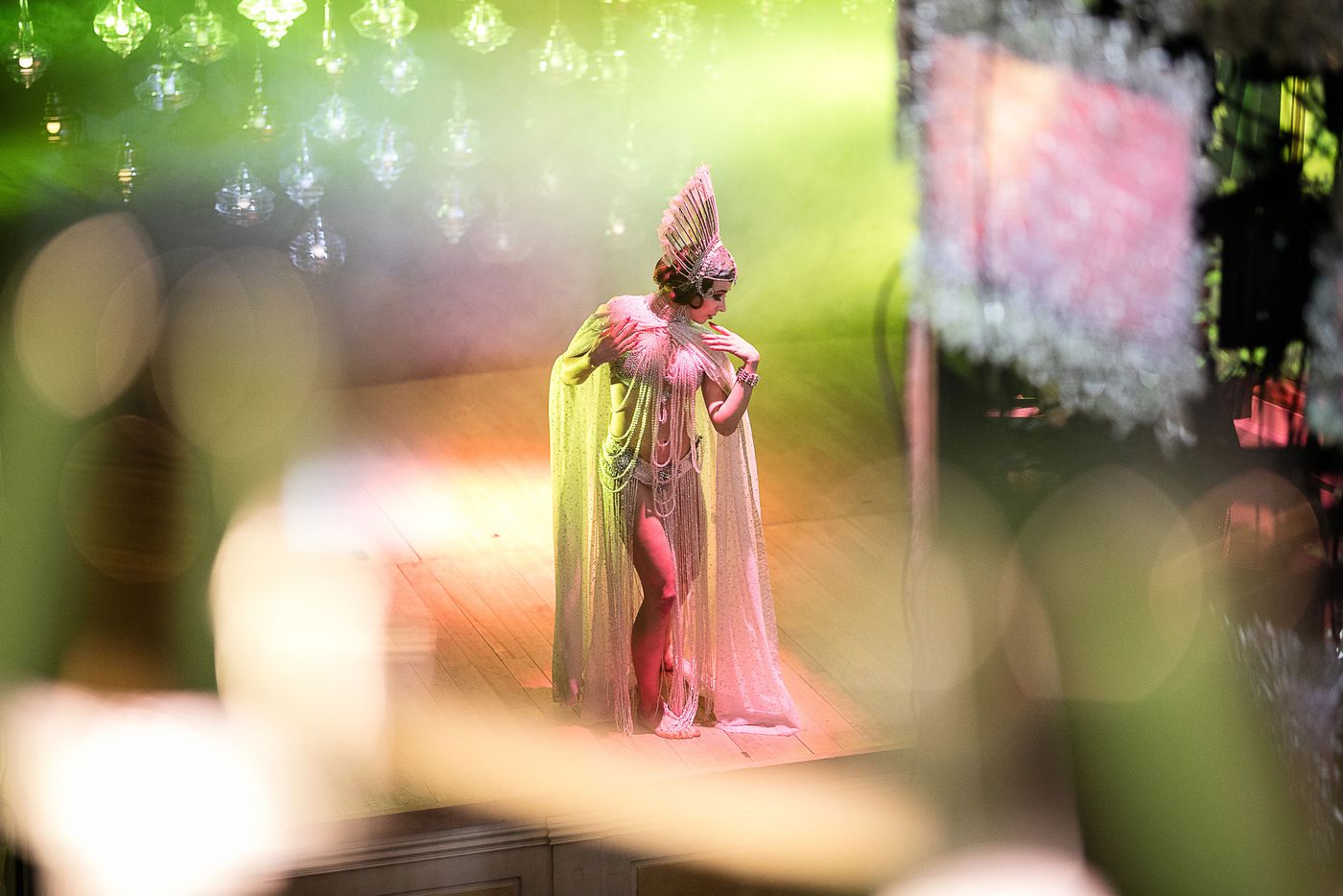
Lasvit Monster Cabaret view at Teatro Gerolamo. Photo courtesy Lasvit.
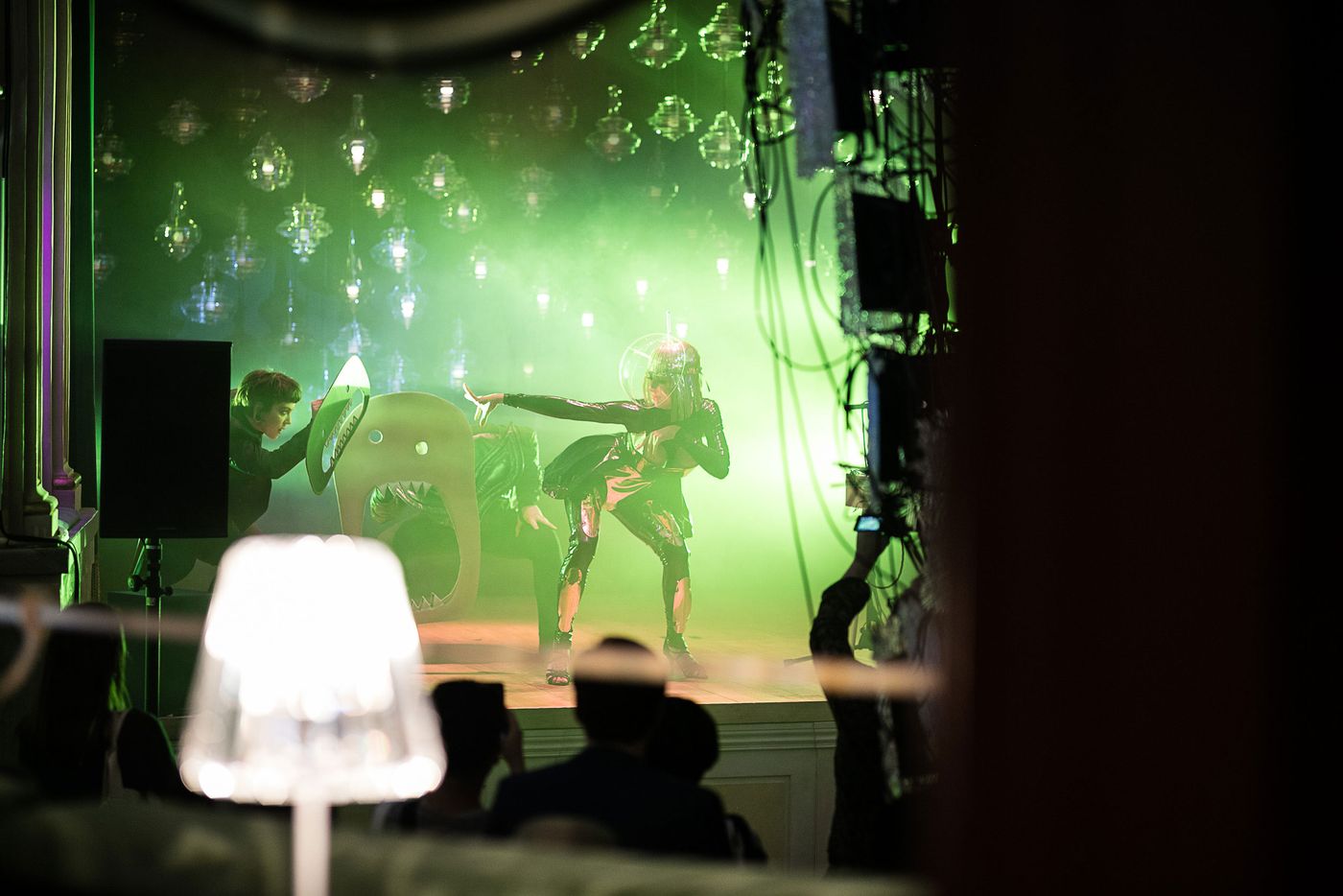
Lasvit Monster Cabaret view at Teatro Gerolamo. On the background Neverending Glory chandelier collection. Photo courtesy Lasvit.

Lasvit Monster Cabaret, Mori Monsters by Moritz Waldemeyer. Photo courtesy Lasvit.
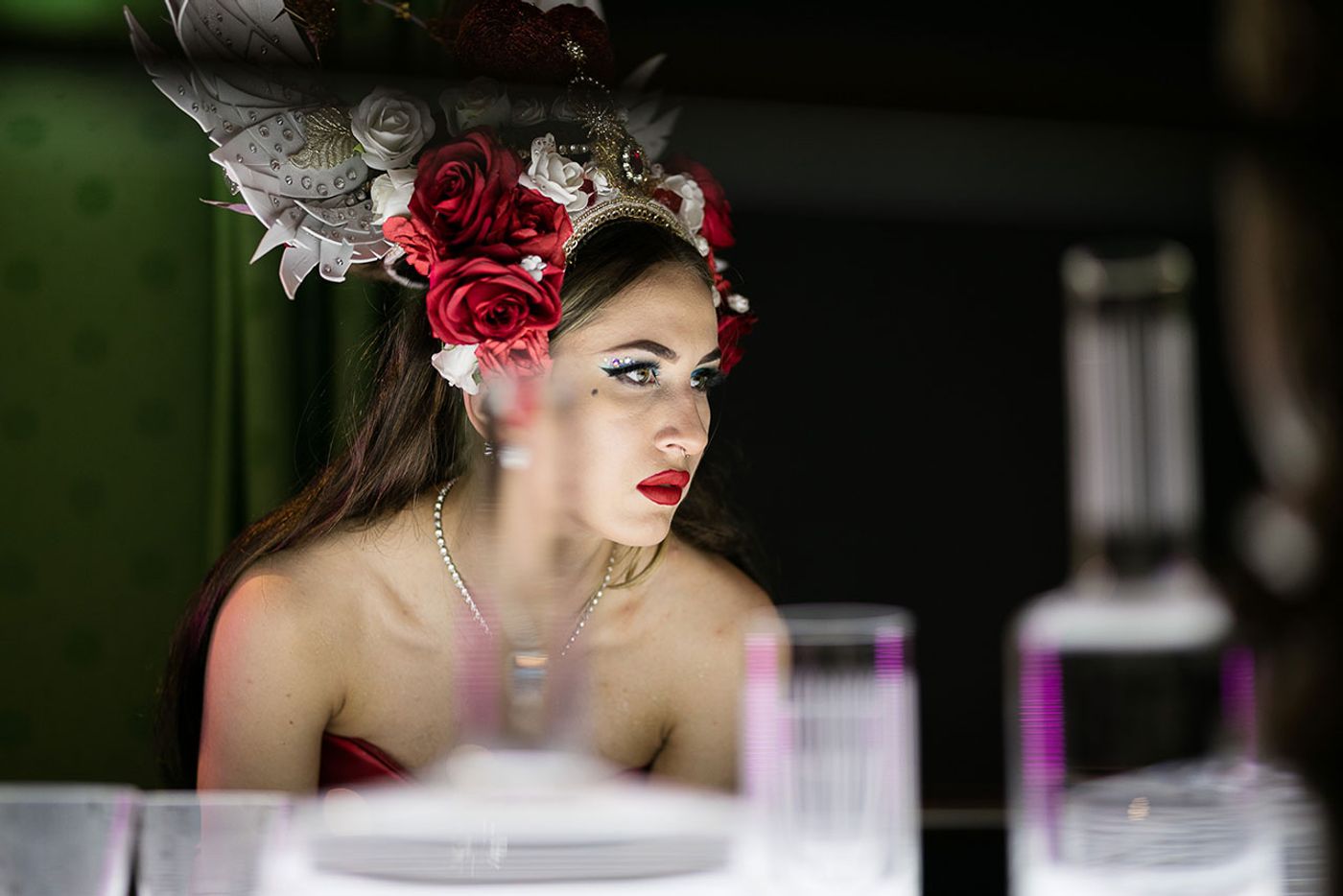
Lasvit Monster Cabaret view at Teatro Gerolamo. Photo courtesy Lasvit.

Lasvit Monster Cabaret, Rombo by Alessandro Mendini. Photo courtesy Lasvit.
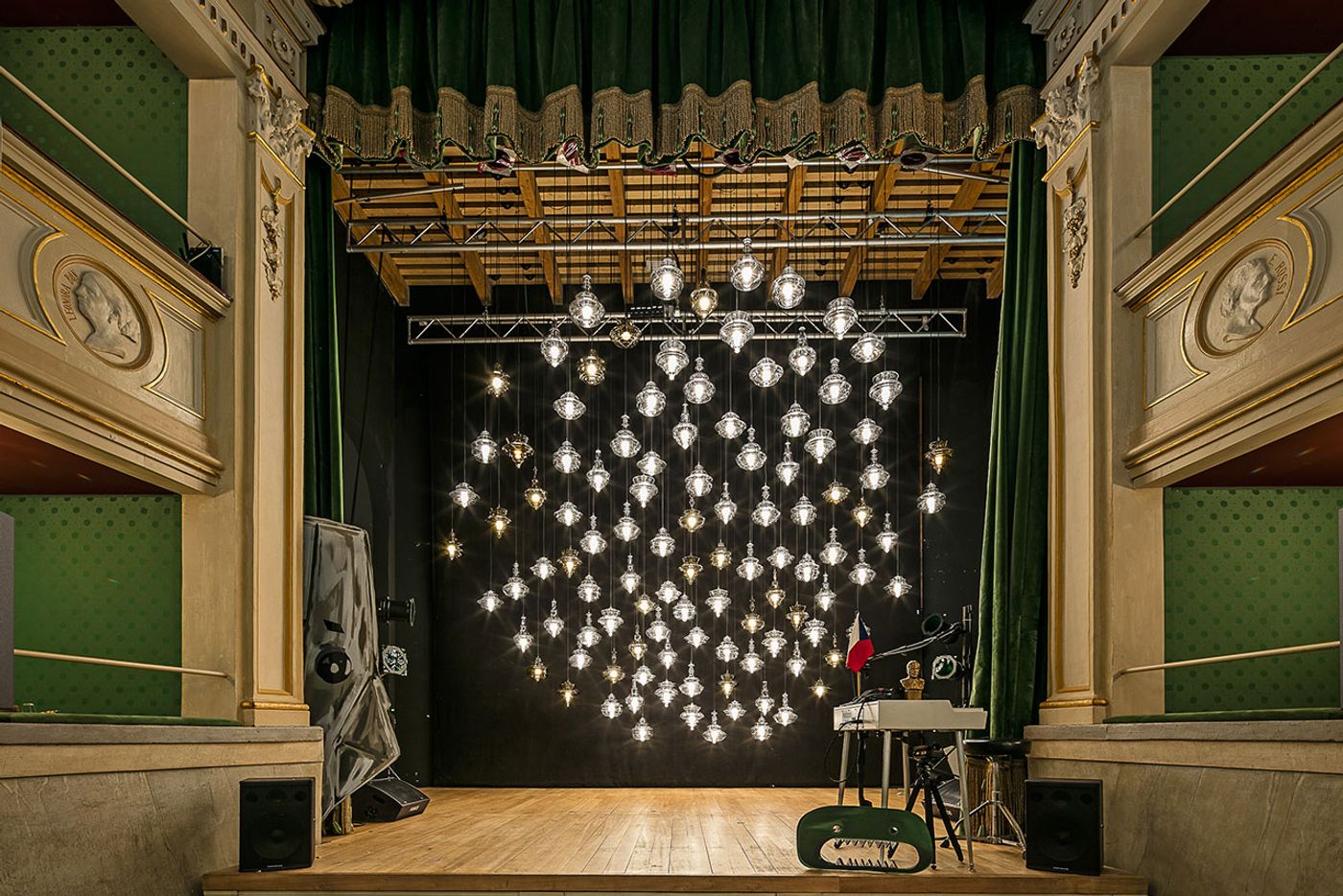
Lasvit Monster Cabaret, Neverending Glory chandelier collection. Photo courtesy Lasvit.
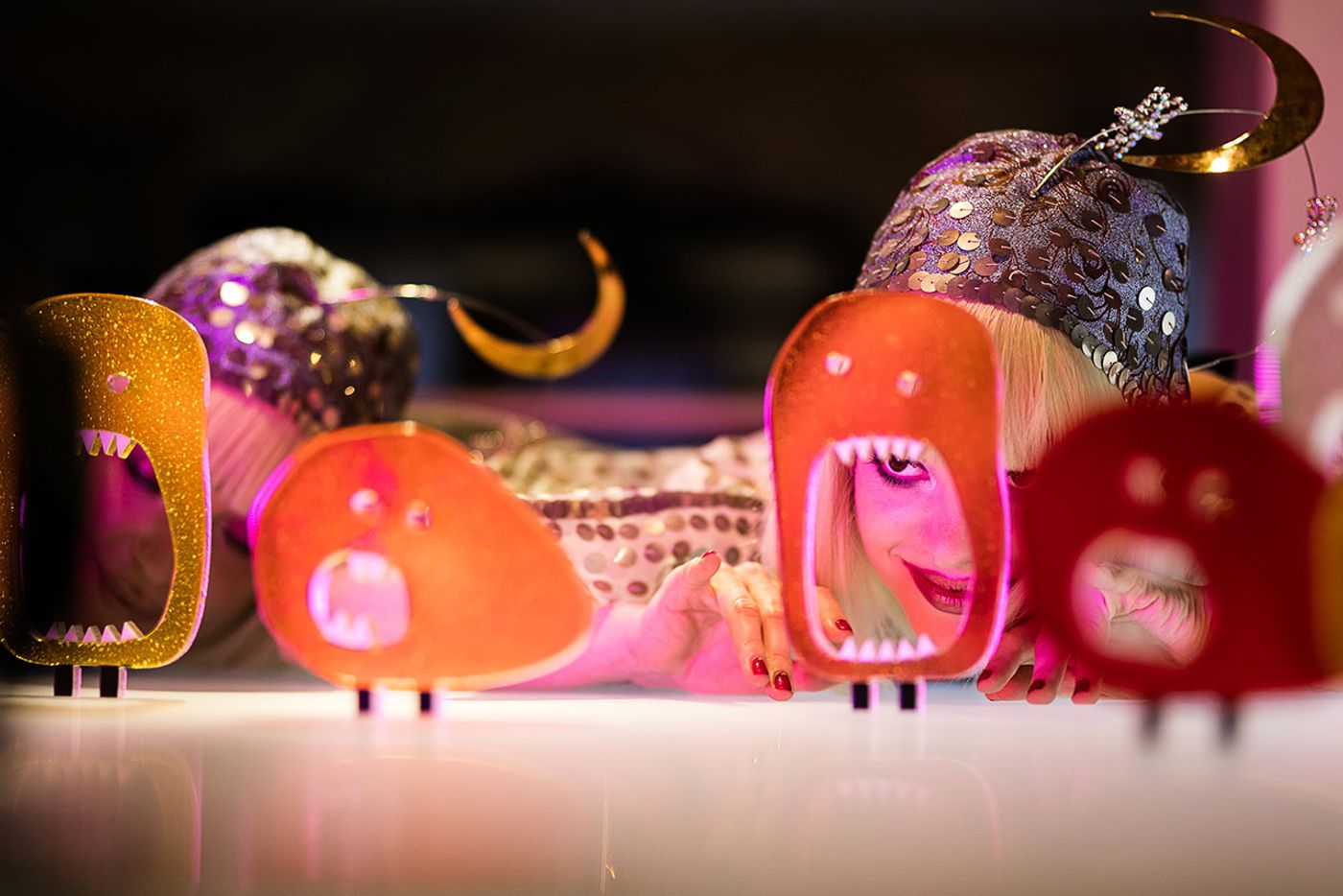
Lasvit Monster Cabaret, BHSD by Maarten Baas. Photo courtesy Lasvit.
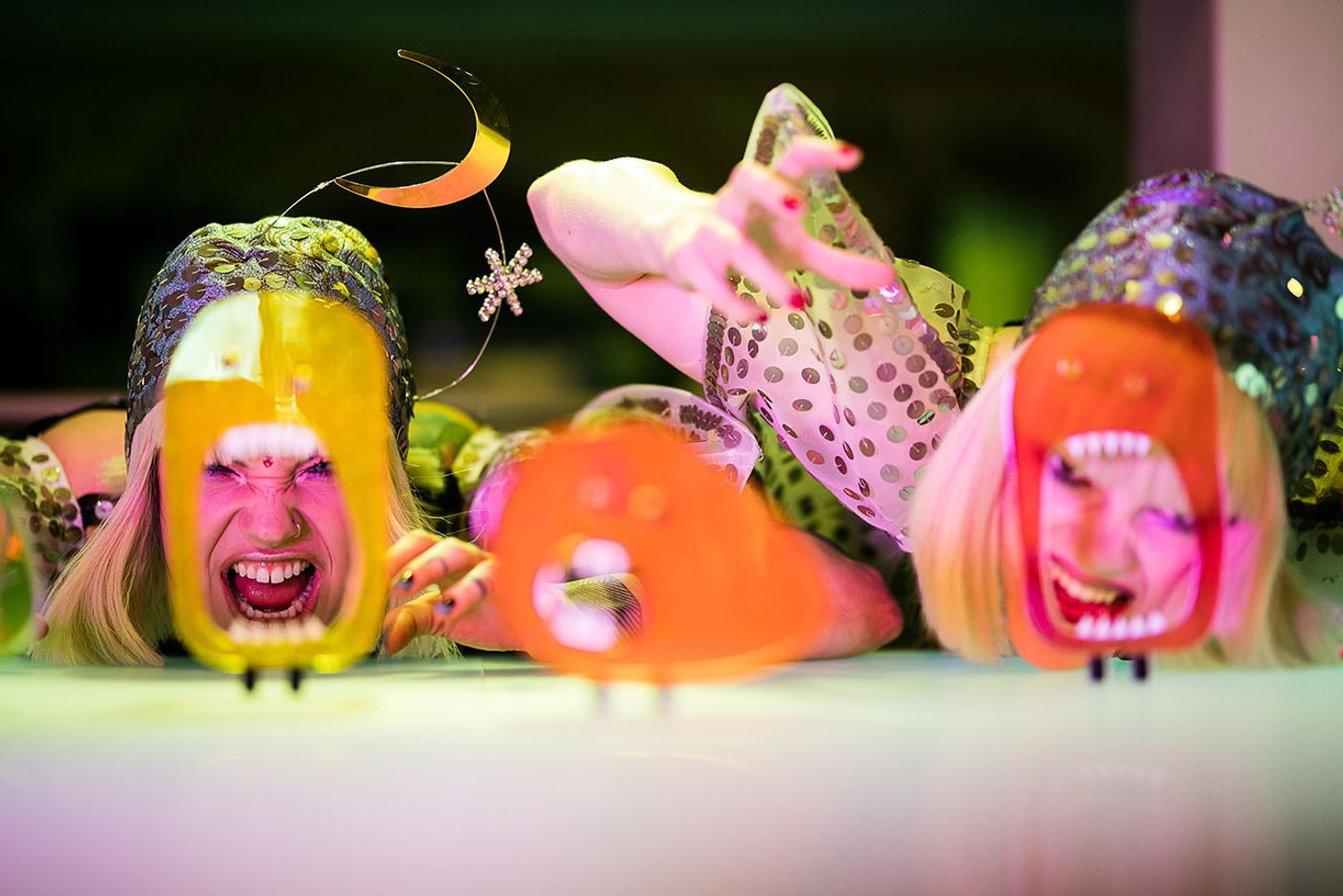
Lasvit Monster Cabaret, BHSD by Maarten Baas. Photo courtesy Lasvit.
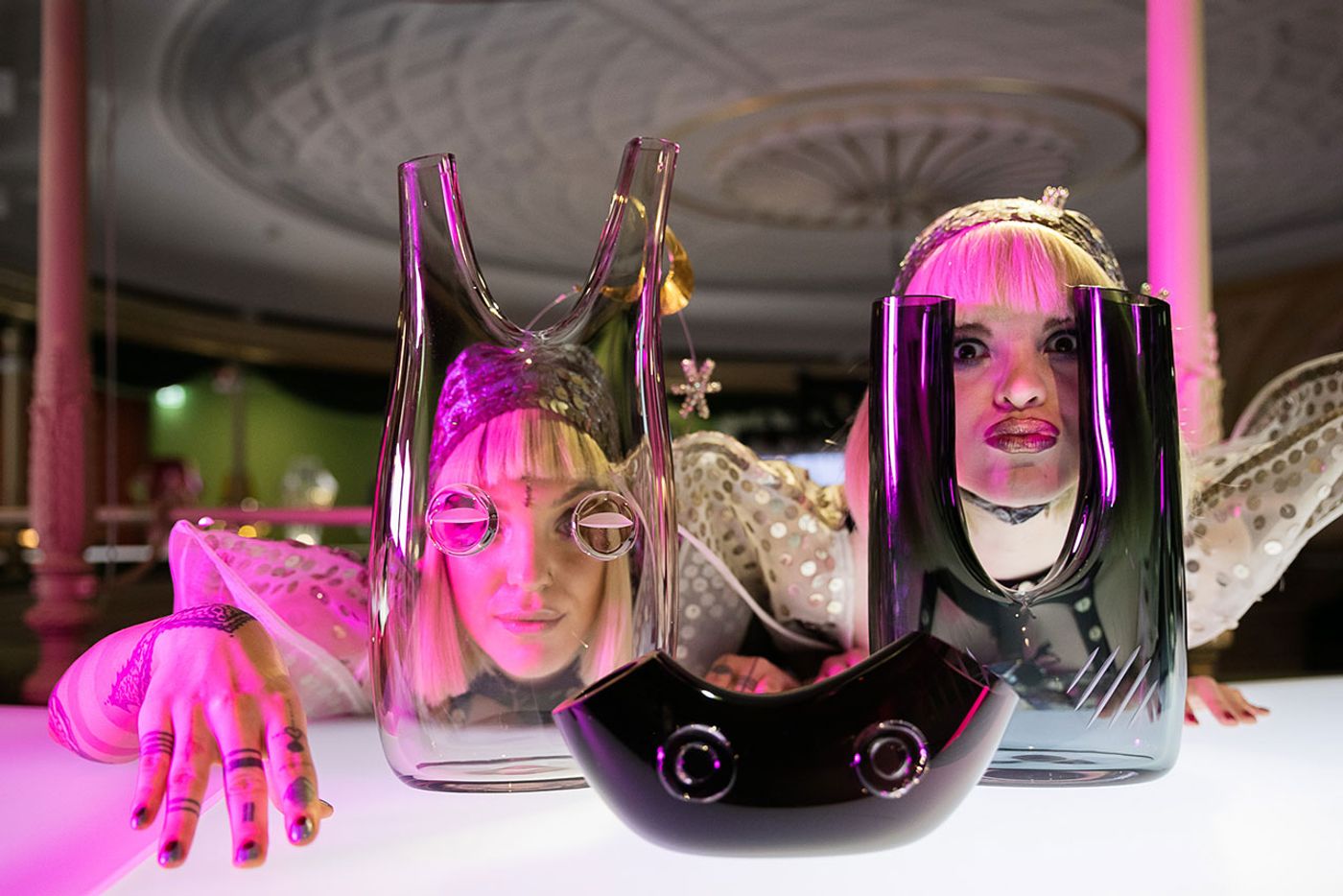
Lasvit Monster Cabaret, Tsukumogami by Yabu Pushelberg. Photo courtesy Lasvit.
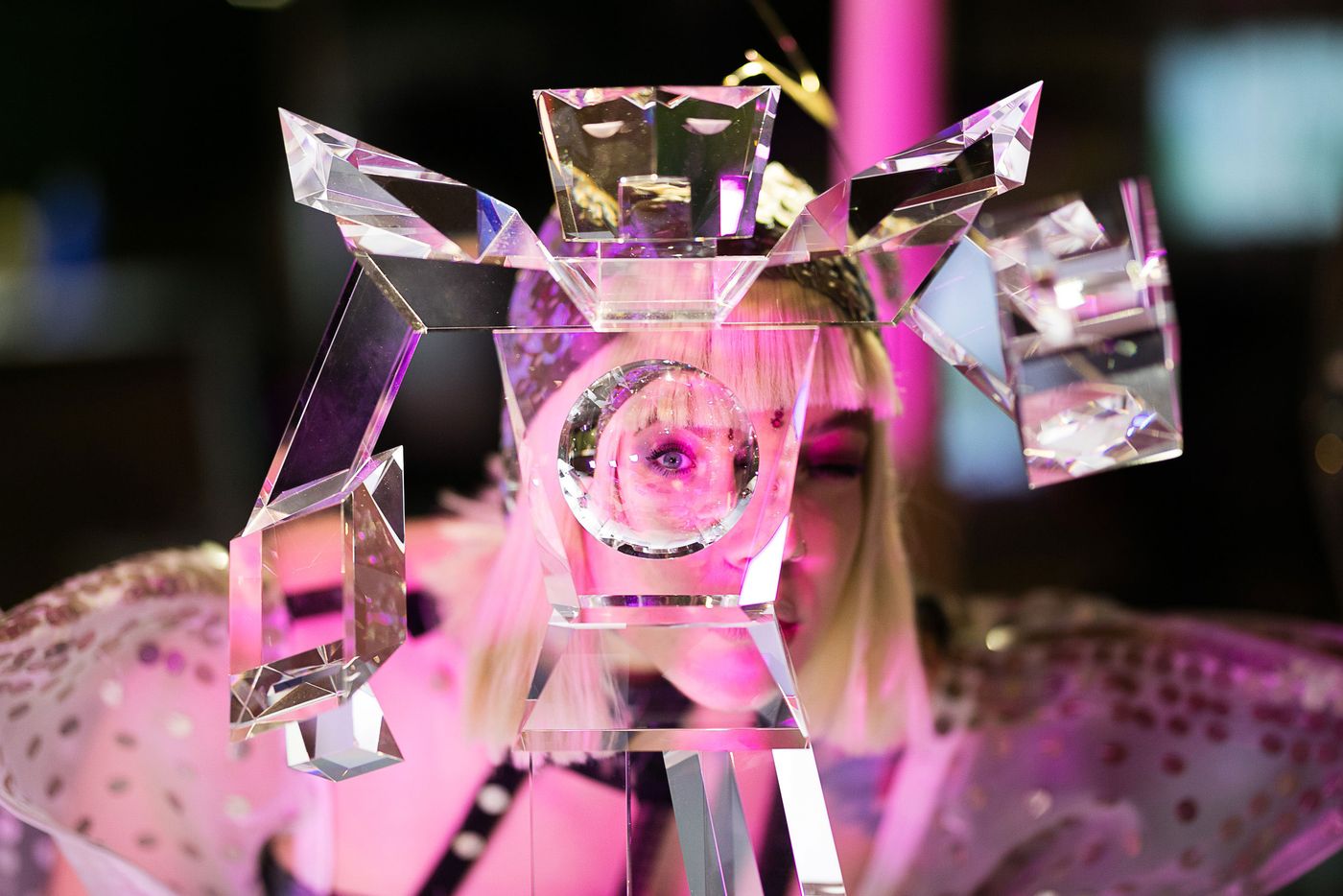
Lasvit Monster Cabaret, Manabi by Stanislav Müller. Photo courtesy Lasvit.
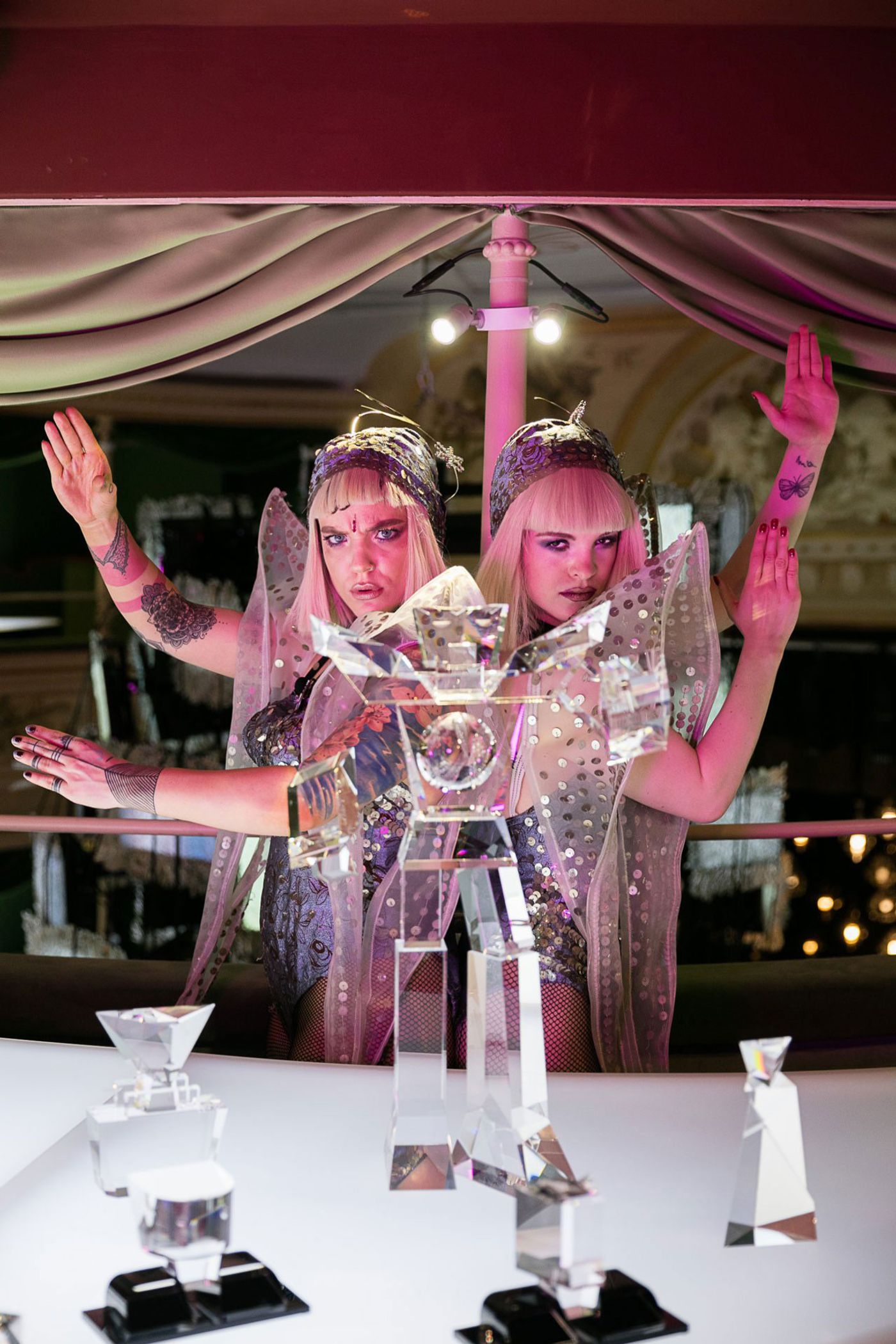
Lasvit Monster Cabaret, Manabi by Stanislav Müller. Photo courtesy Lasvit.
